2024 Specialized Epic 8 EVO Pro Bike
| Where To Buy | |||
|---|---|---|---|
Free shipping on orders over $50 (continental U.S. only).
International shipping available. Some exclusions apply. |
Free shipping on orders over $50 (continental U.S. only).
International shipping available. Some exclusions apply. $3,800.00
|
||
Specialized Epic 8 Evo Pro Frame
$3,800.00
|
|||
Free shipping on orders over $50 (continental U.S. only).
International shipping available. Some exclusions apply. |
Free shipping on orders over $50 (continental U.S. only).
International shipping available. Some exclusions apply. $3,800.00
|
||
Free U.S. shipping on orders over $50, except bikes.
There is a $50 destination fee for bikes. |
|||

Historically, Vital doesn't do cross country. We dabble here or there, but our passion is gravity-fueled mountain biking. When Specialized reached out at the end of last year about a new mountain bike on the horizon, I assumed it was for the new Stumpjumper (we all know it's coming soon). But lo and behold, it was for the Epic. Having always kept my knowledge of the XC world at arm's length, I knew the Epic had helped steer the evolution of XC racing, that it had a rear shock with a mind of its own, and that there was a more capable, fun-loving EVO variant.
Upon hearing that the EVO was bumping up in travel and would be positioned more as a mini-trail bike instead of an aggressive XC bike, better fitting Vital's DNA, I figured no harm, no foul, let's go pedaling. I packed my flat pedals, trail helmet, and 'baggies' and joined Specialized for four days of what would become an eye-opening journey into the realm of modern-day cross-country bikes.
So here is a first look at the new Epic 8 and Epic 8 EVO from the perspective of an ex-World Cup downhill racer.
Epic 8 Highlights |
Epic 8 EVO Highlights |
|
|
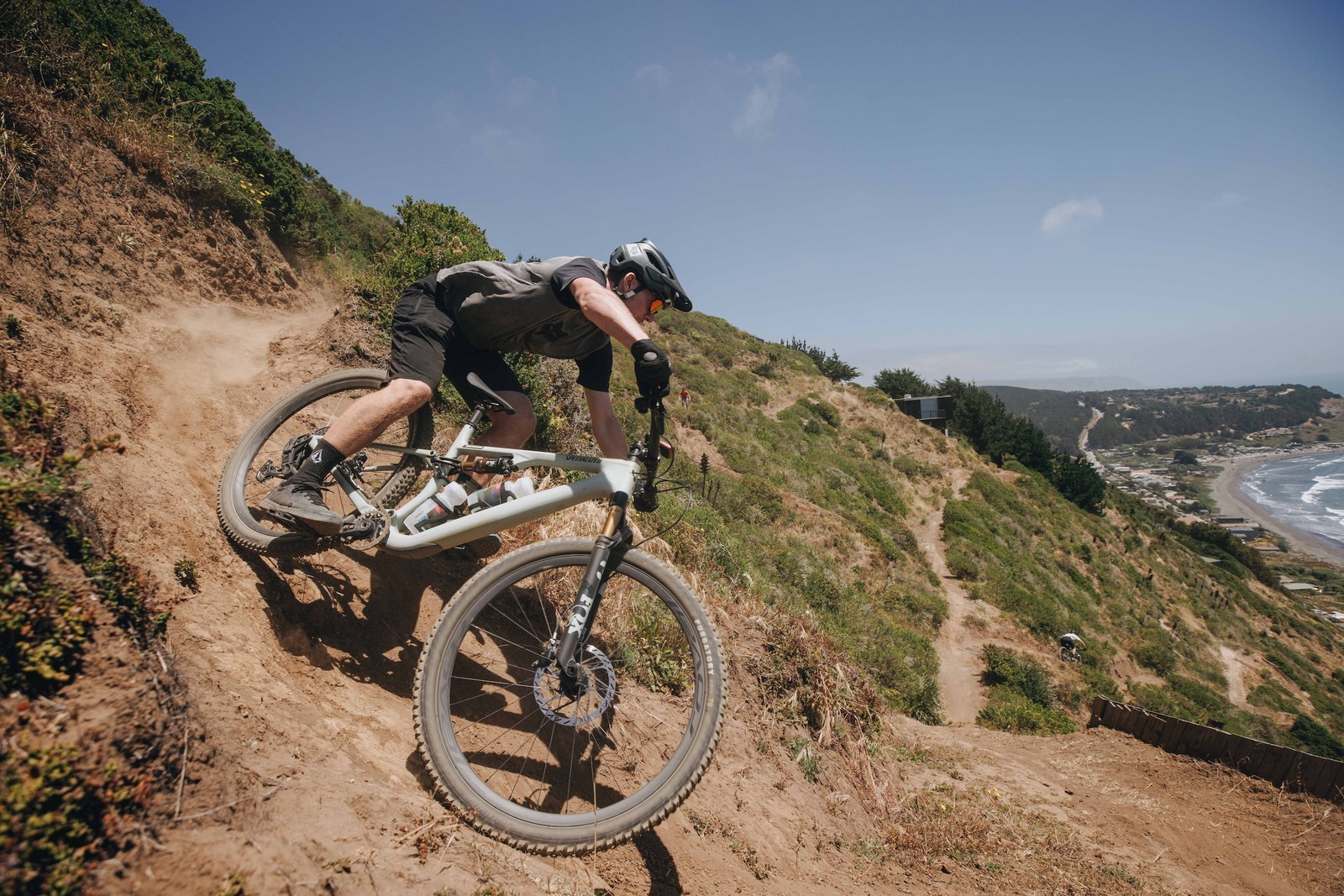
An Epic Overview
The Epic has existed for decades, and the 2024 model is the 8th edition. So what's changed? It all started in the 90s with carbon tubes and titanium lugs…just kidding; this isn't a history lesson. Compared to the last Epic released in 2021, most updates center around the combined effects of geometry, suspension kinematics, and frame construction to create a lighter, uber-efficient bike that's composed when things get hectic. The Epic has continuously been modified to serve riders looking for every performance advantage, whether on a post-work group ride or in a race environment. Specialized's top athletes are the leading motivators behind the evolution of their bikes, and the Epic 8 reflects the current demands and needs of their top cross-country, endurance, and marathon athletes.
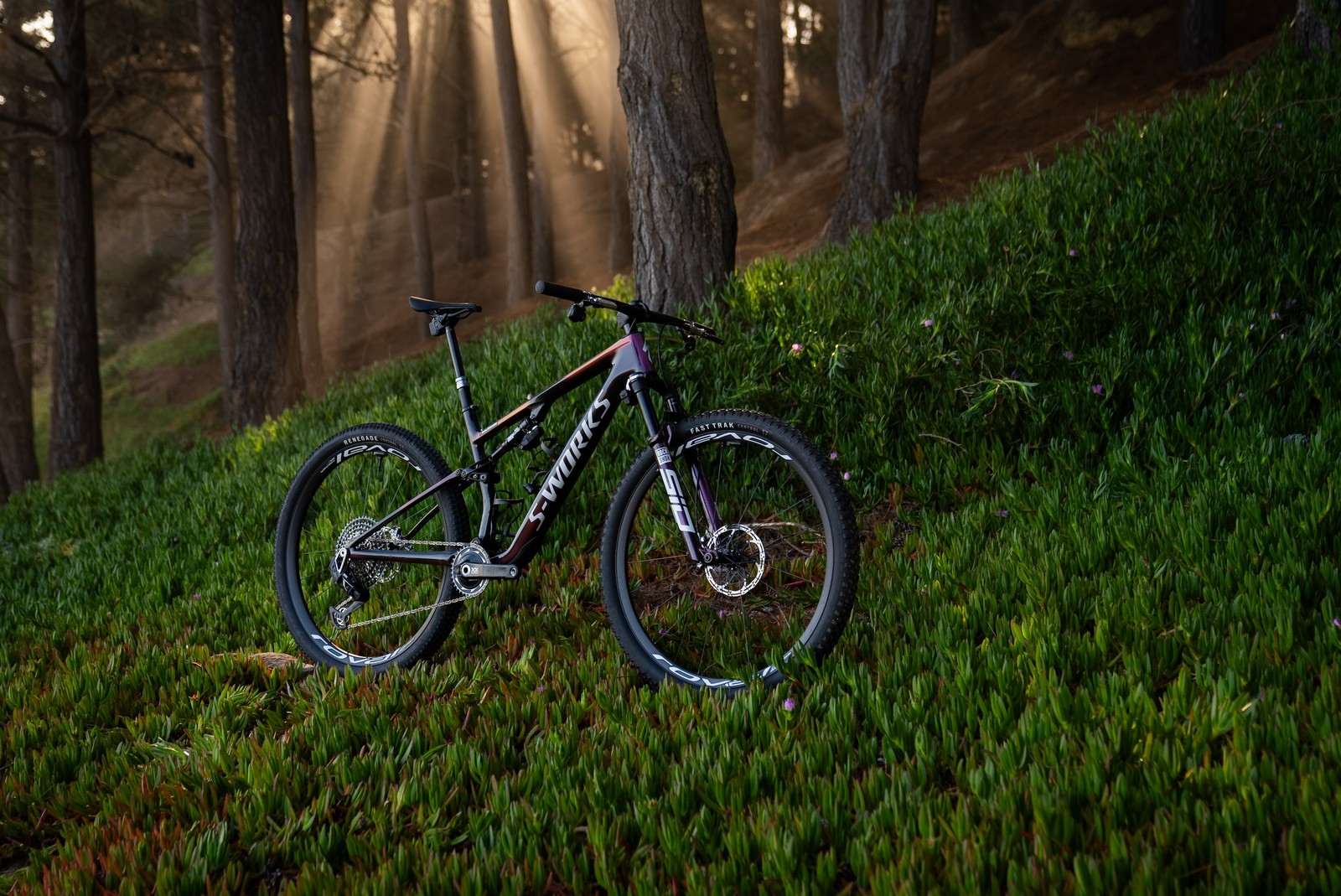
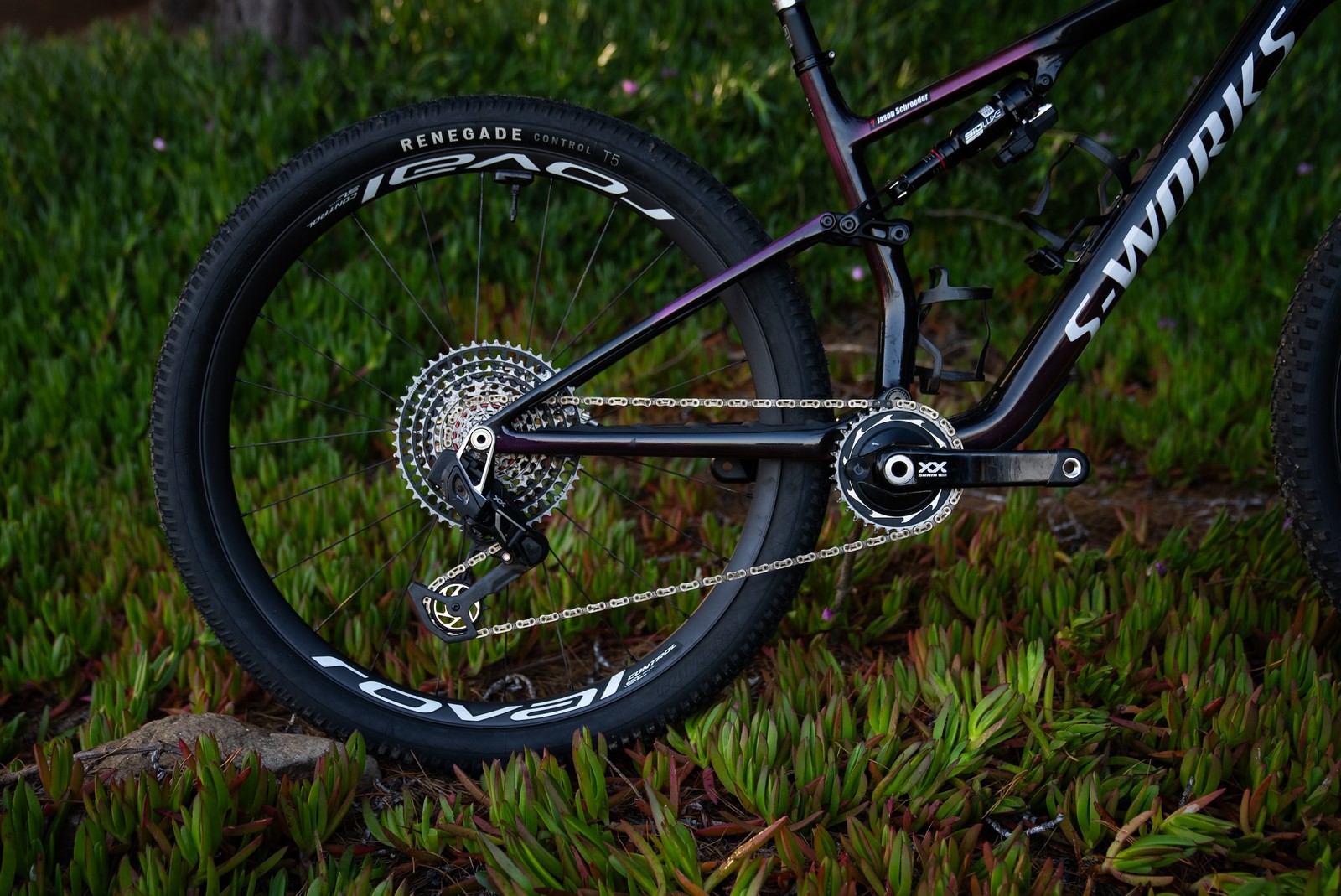
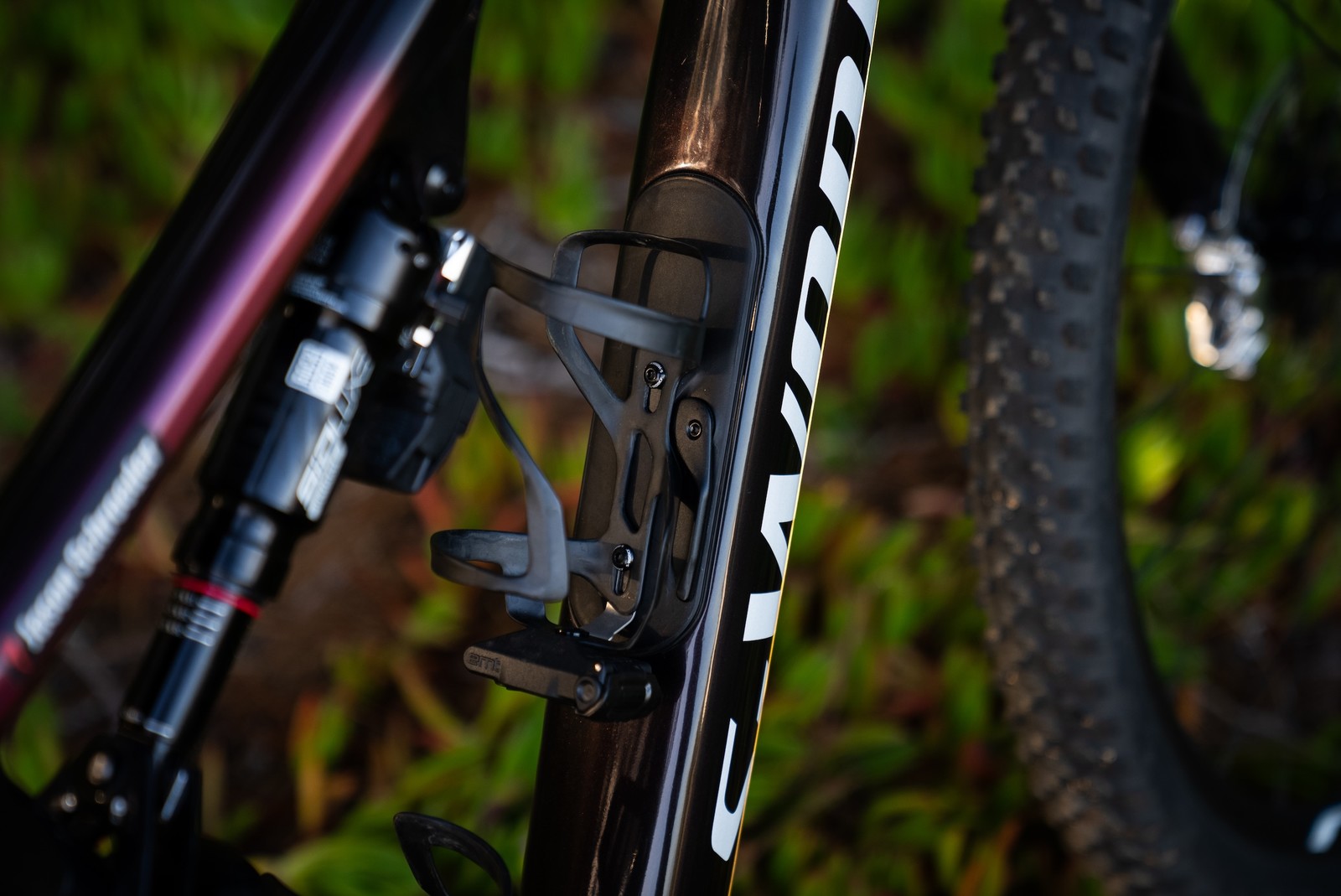
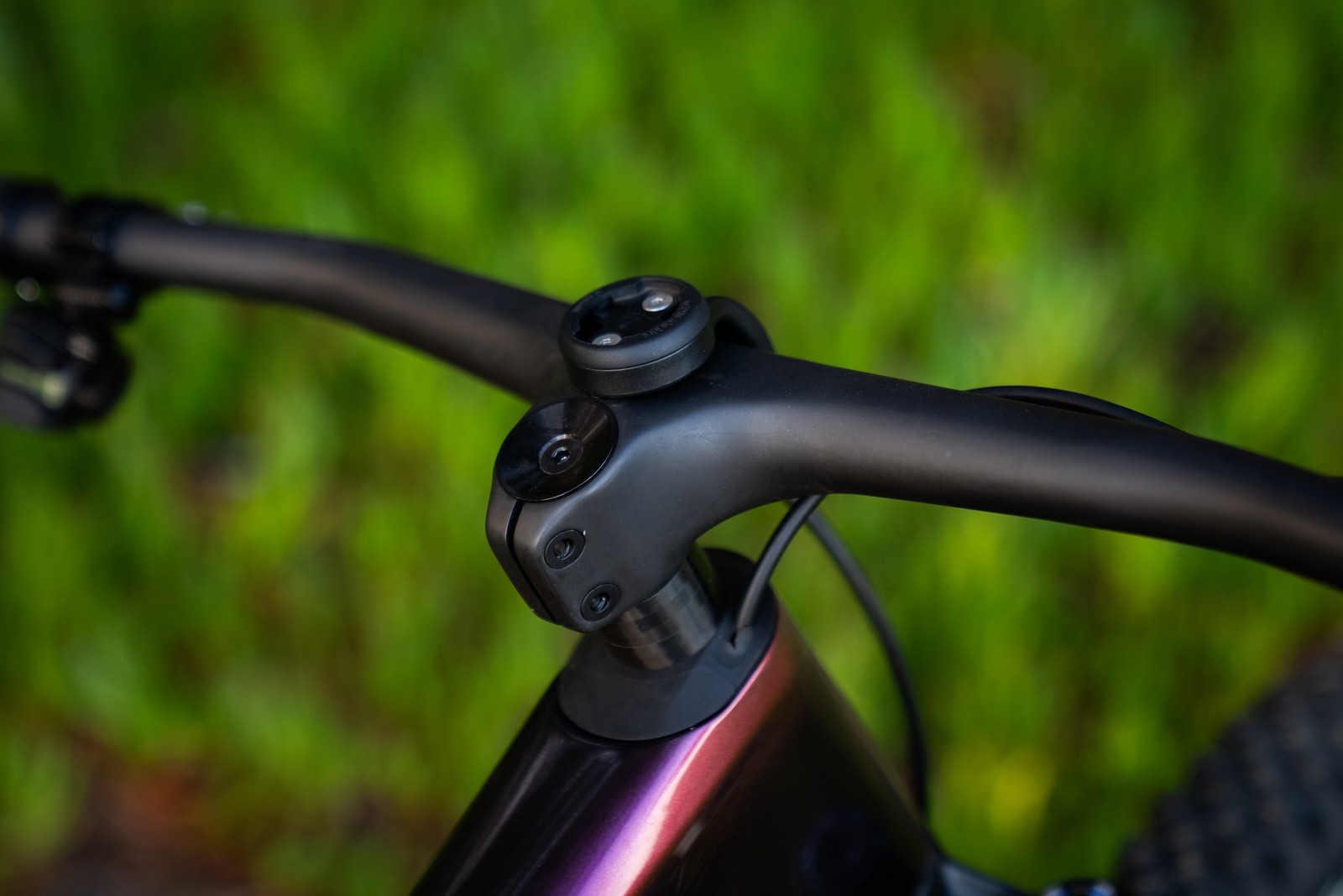
The frame's silhouette isn't drastically different than before, utilizing the same FSR suspension layout with a one-piece rear triangle and flex stays. Shockingly, Specialized has done away with its Brain Technology for the first time since the Epic's inception in 2002, and travel has jumped from 100mm to 120mm front and rear. Not so shockingly, the downtube features a SWAT 4.0 compartment with an updated lever mechanism that's a thousand times easier to open than the first SWAT design. Now, you don't have to rip off your fingertips to access your month-old gels that have gelatinized into a singular energy glob.
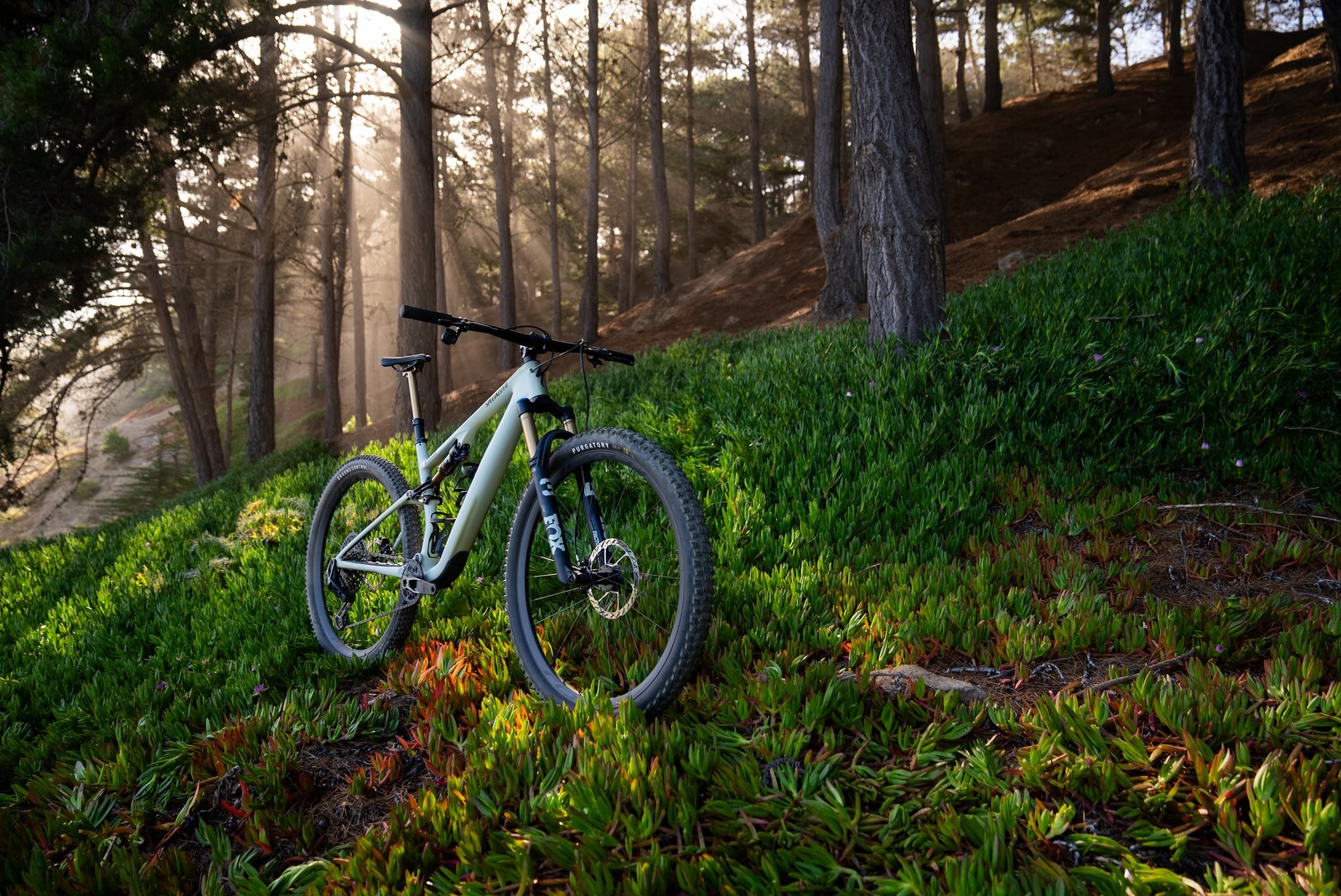
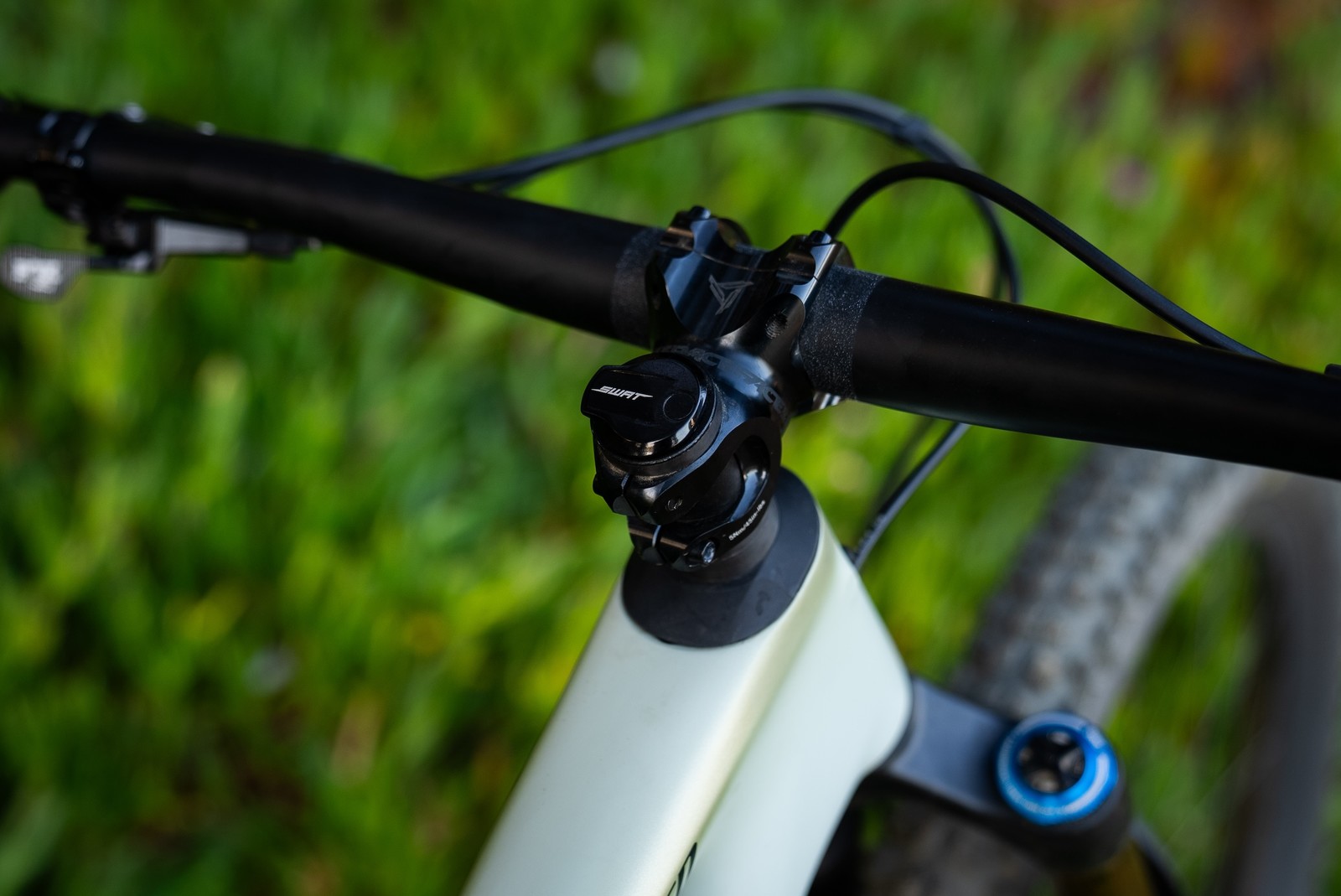
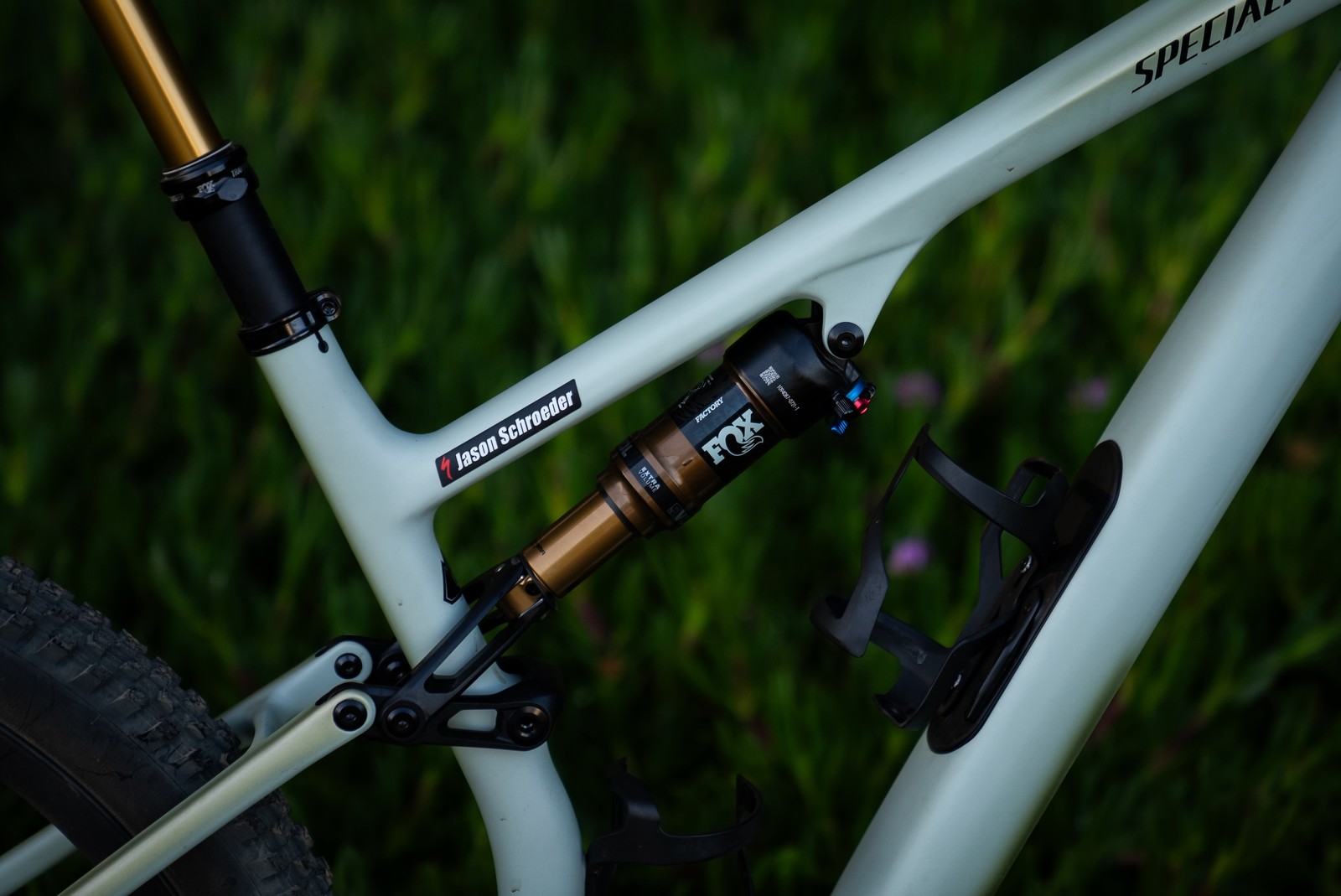
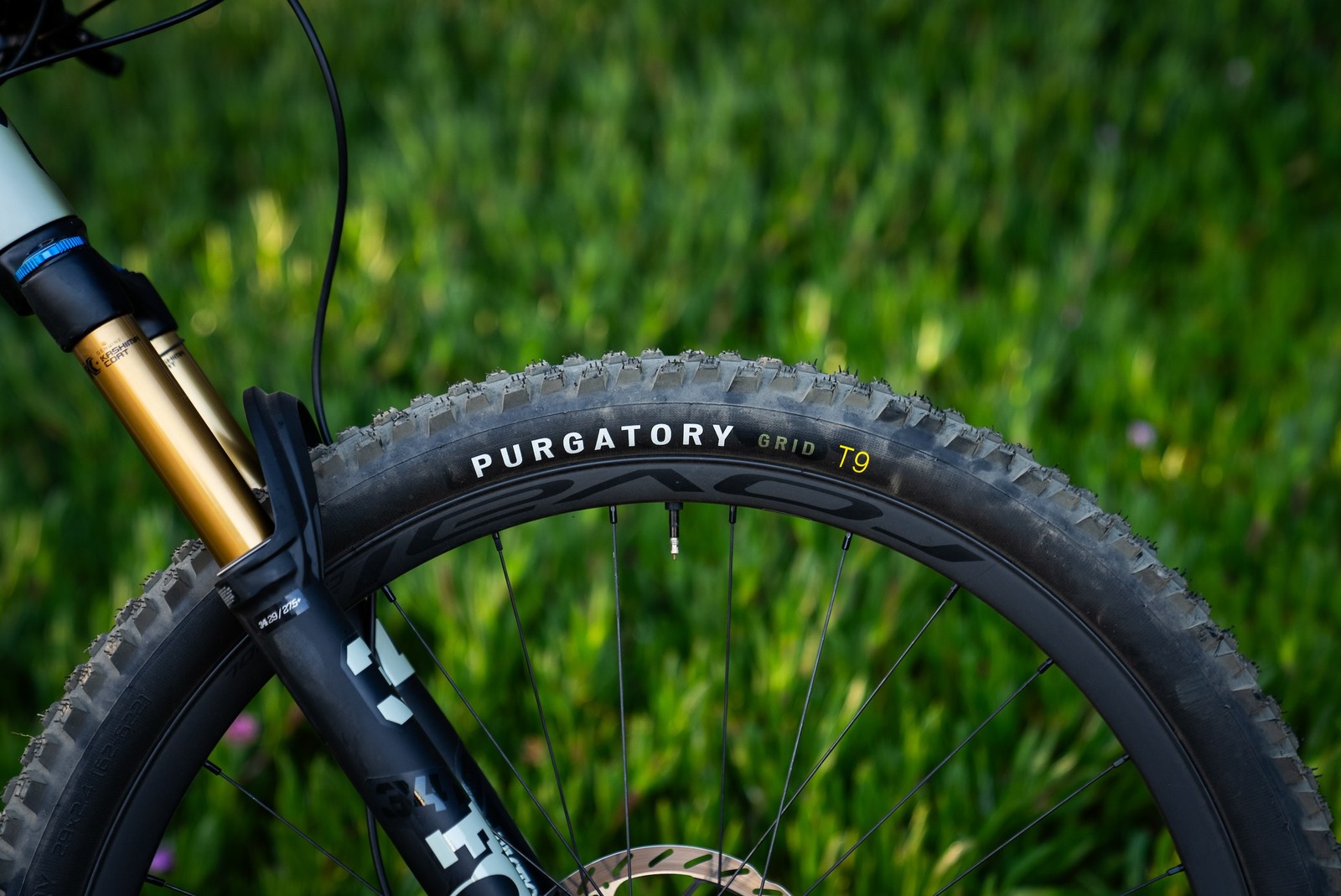
The Epic 8 EVO now shares the same frame as the Epic. Before, it only shared the front triangle and used its own Brain-less rear triangle with a stiffer shock link. Component spec alone is all that separates the two Epic 8 iterations, with the EVO using a 130mm fork with a beefier shock, brakes, rotors, tires, wheels, and a trail-esque cockpit and longer dropper. These differences are intended to elevate descending confidence without significantly diminishing climbing speeds. They do, however, tack on a few extra pounds.
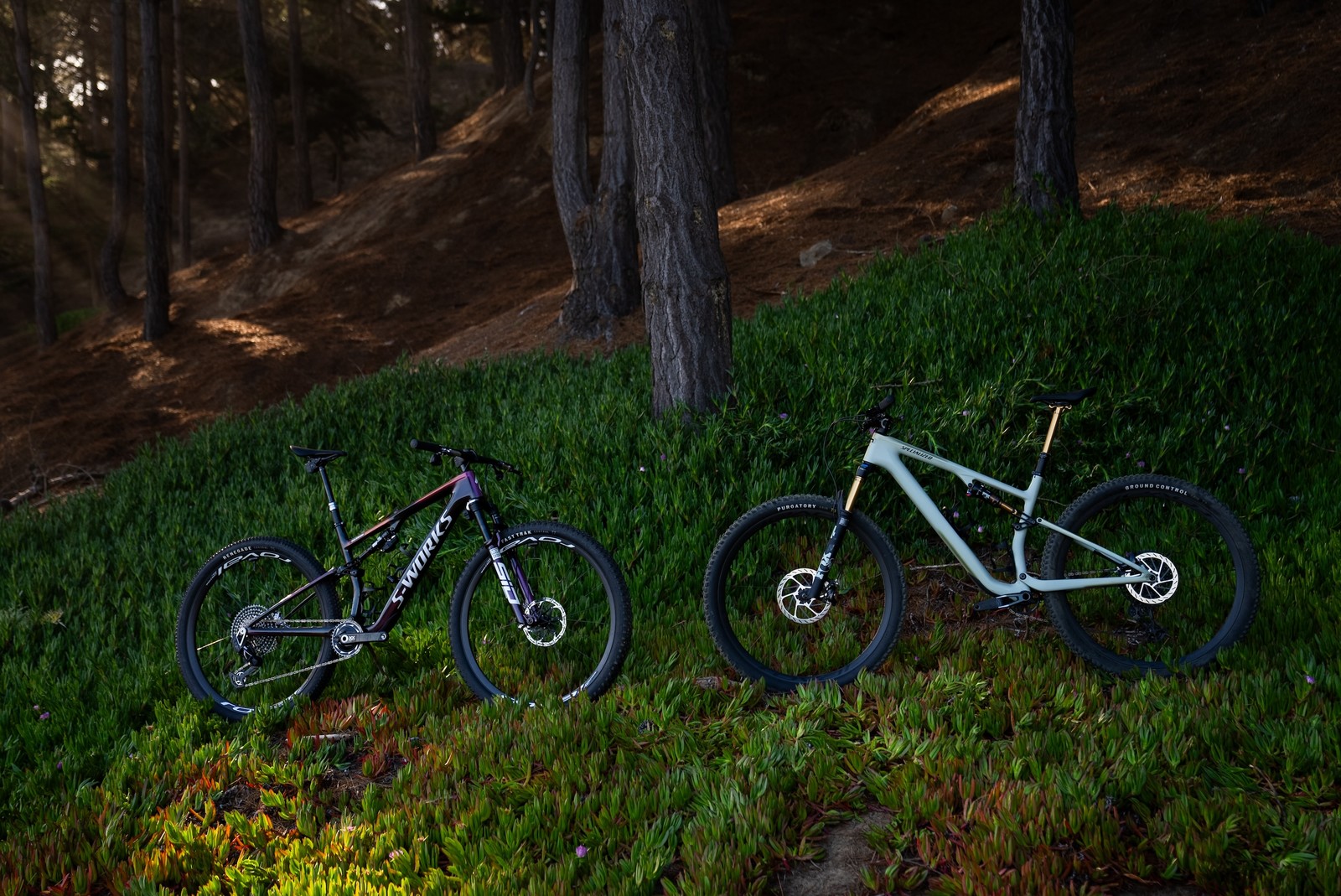
The best part about the two Epics using the same frame is you could easily toggle between setups with just a few parts. As I'll get into, the Epic 8 freaking blew my doors off. But creating a build that lands between what Specialized offers would be really neat.
An Epic Family
After resurrecting the Epic World Cup last April, most XC-virtuosos predicted that the next Epic and EVO would arrive in 2024 with more progressive geometry and more travel. Which makes sense—a few Specialized World Cup athletes were already racing the EVO, and the Epic WC satisfied the need for an ultra-light, hard-tail-like XC bike. Thus, souping up both Epics satisfied rider needs while also creating better separation within the Epic family. However, the differences between the Epic 8 EVO and the current Stumpjumper are slimmer than ever. It'll be interesting to see what the next Stumpjumper looks like and if Specialized tries to separate it from its smaller sibling.

Here is how the Epic lineage breaks down in 2024:
- Epic World Cup - XC race bike for those who want hardtail-like acceleration with bump-absorbing efficiency to take on less technical terrain
- Travel: 75mm rear travel, 110mm fork
- HTA: 66.5°
- STA: 74.5°
- 430mm rear center
- Weight: 20.4-23.1 lbs
- Epic 8 - Premier XC race bike optimized for demanding terrain while maximizing efficiency ascending. Ideal for World Cup cross country, marathons, and stage racing.
- Travel: 120mm rear travel, 120mm fork
- HTA: 66.4°
- STA: 75.5°
- Weight: 24.5-25.8 lb
- Epic 8 EVO - Miniature trail bike with balanced abilities ascending and descending.
- Travel: 120mm rear travel, 130mm fork
- HTA: 65.4c
- STA: 75°
- Weight: 26-29 lbs
*weights provided by Specialized for a size medium frame
Gram Countin'
You can't develop a new cross-country bike and not make it lighter. For those who live and die by the grams, the Epic 8 S-Works frame is 76 grams lighter than the previous S-works frame. It ain't much, but it's honest work. Specialized says they could have made the frame even lighter, but it would have detracted from the bike's capabilities. And with the EVO using the same frame, keeping a few extra grams where it counts is worth having a frame that won't feel like a wet noodle when ridden hard.
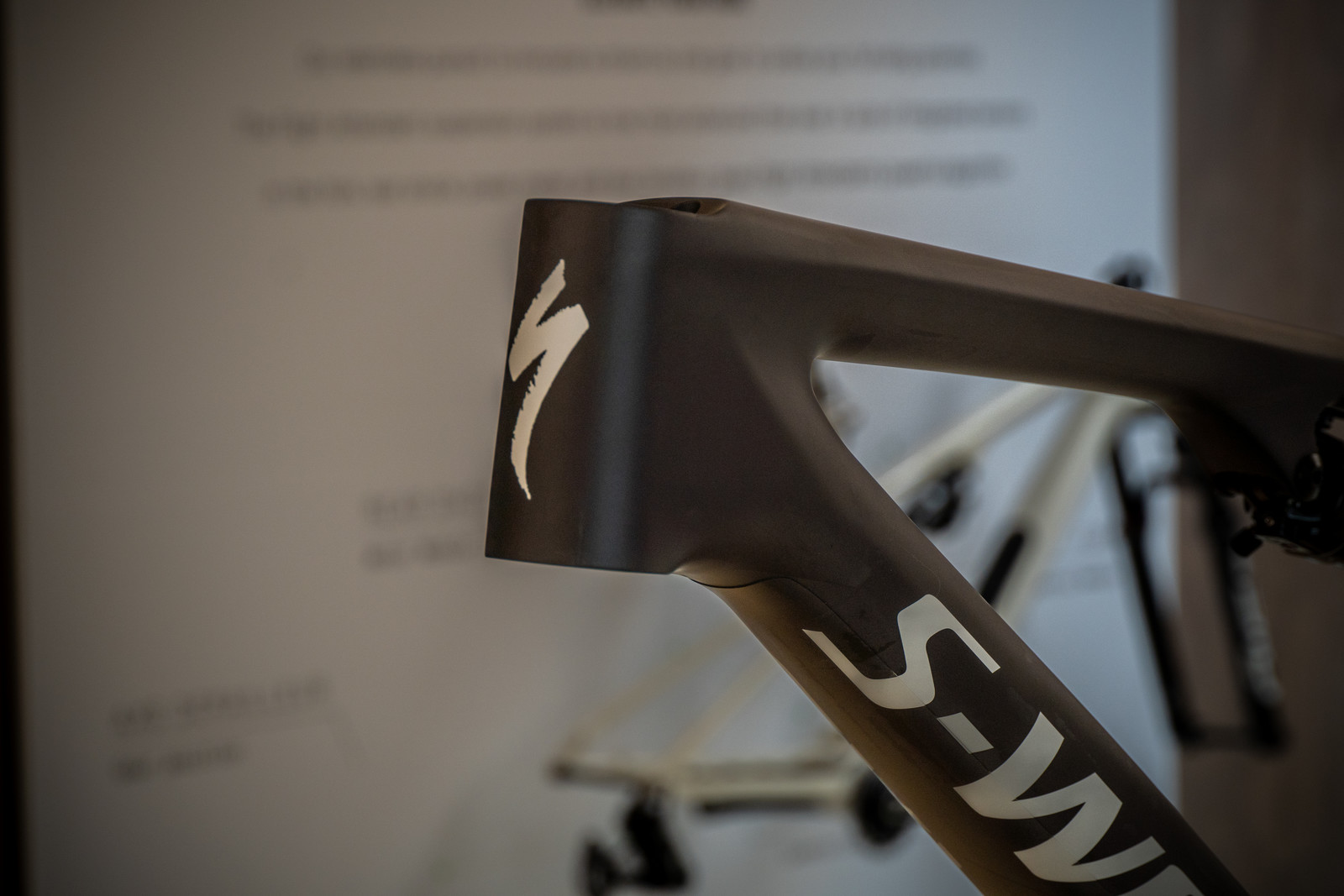

The S-Works frame uses Specailized's FACT 12m carbon fiber to deliver the best combination of strength to weight to impact resistance thanks to premium composite laminate and a strategic layup schedule. Non-S-Works builds use their FACT 11m carbon fiber that provides a comparable ride quality and strength properties but is heavier, and the raw material is cheaper. Regardless of which carbon you ride, each frame size has been engineered with its own unique carbon formula to give riders on every frame size the same stiffness-to-weight performance.
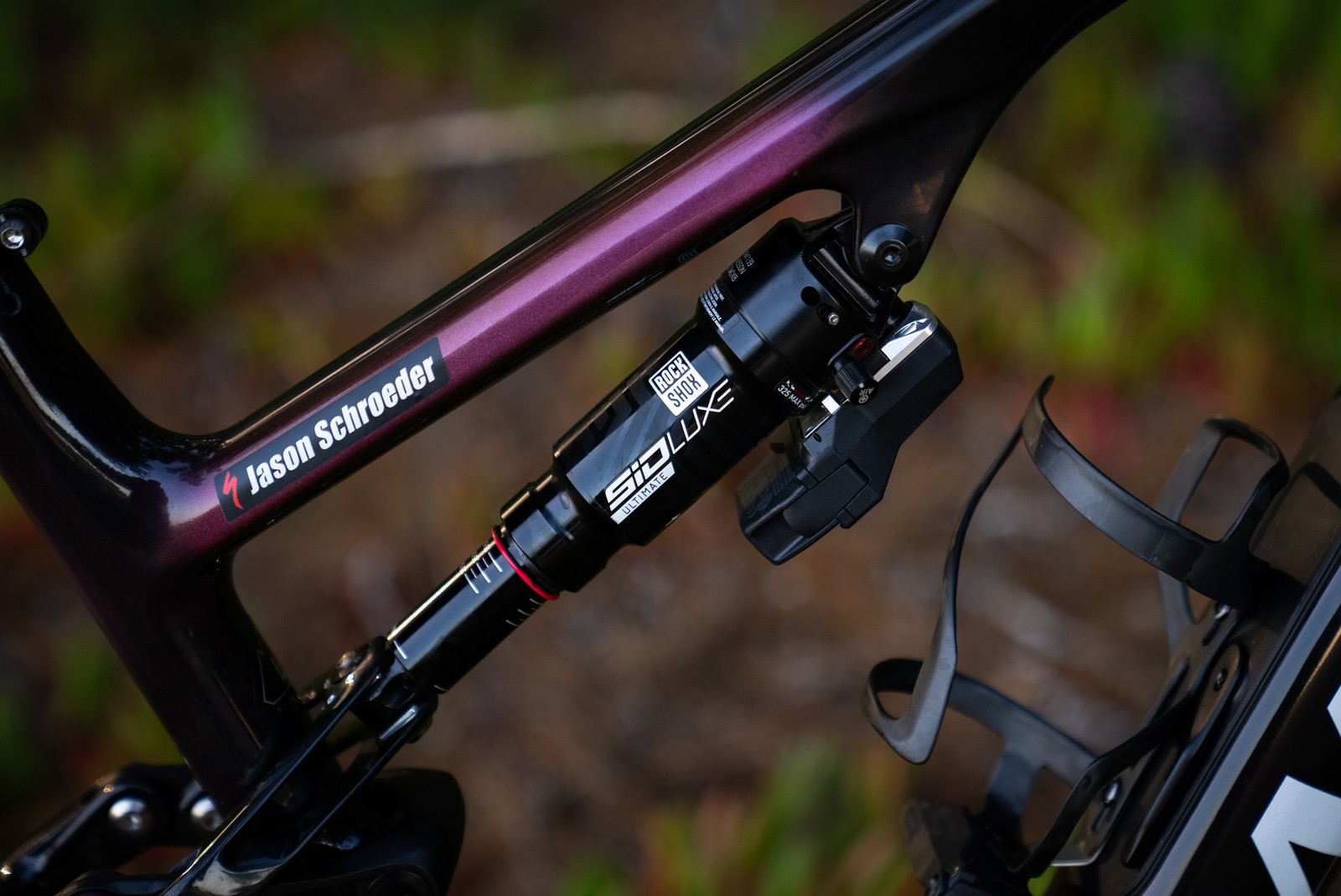
A final tidbit that may seem miniscule but was celebrated by Specialized's development team as an example of the energy they're willing to exhaust to maximize frame performance was the manufacturing process behind the forward shock tabs on the Epic 8. Typically, shock tabs are compression molded separately and then bonded to frames. On the Epic 8, the mounting tab is bladder molded with the rest of the frame and post-machined, creating a uniform, continuous carbon layup that is stronger and stiffer. Oh, and it saves 24 grams. #gainz
Geometry
The Epic's geometry has continued to relax and grow to a degree that's quite progressive by XC standards. The goal was to maximize the bike's efficiency while increasing its technical capabilities. The suspension design does most of the heavy lifting in keeping the bike a spritely spring chicken when pedaling, so most changes focus on the latter. Comparing past and present geo charts, the new Epic 8 is just over a degree slacker (66.4° vs. 67.5°), the reach is 5mm longer across all sizes, the stack is around 5mm taller on all sizes, and the seat tube angle remains unchanged at 75.5. The chain stay length is also 2mm longer and is still not size-specific. This all adds up to a bike that allows you to hammer on the pedals in a very forward, attack position, while making the bike comfortable and confident during steep, fast, rough descents.
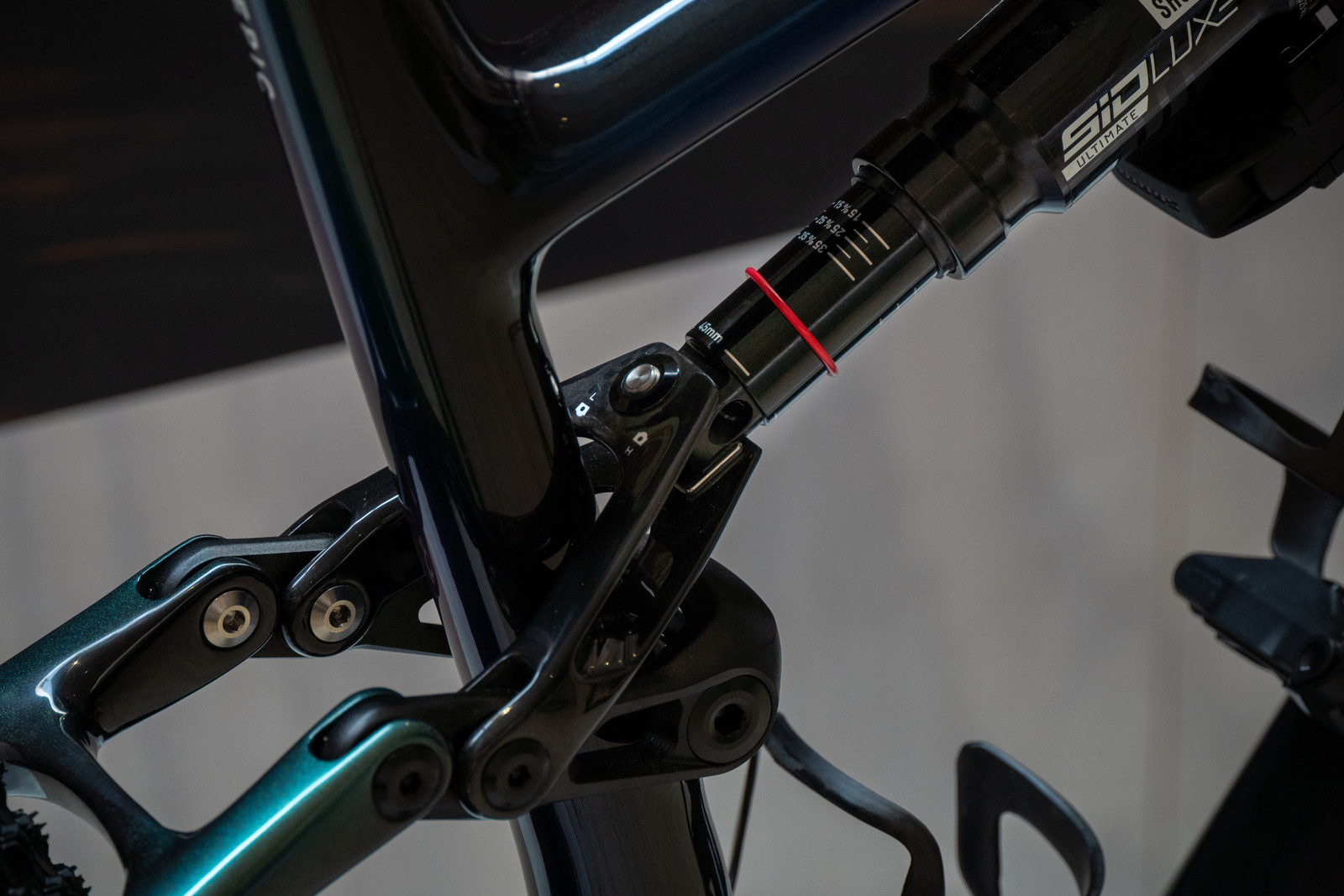
The Epic 8 EVO arrives in the Low flip chip positions, slackening the head angle by a degree to 65.4, shortening the reach by 5mm in each size, and lowering the bottom bracket height by a few millimeters. The changes are subtle, and I'd argue the swap to a 130mm fork, riser handlebars, and a 50mm vs. 60mm stem have a bigger effect on making the EVO a shred-worthy descender. Compared to the previous EVO, the new model ticks all the boxes for a newly released short travel bike, coming in slacker, taller, longer, and lower than before.


The End of An Epic Era - Goodbye Brain
That's right, the inertia valve design is merely dust in the wind in 2024. Specialized didn't really address why they left their Brain technology in the past, but from what I gathered, they were able to create a Brain-free kinematic package that delivered a more efficient pedaling platform with better impact management descending. And just like you can't make a new XC bike and not have it be lighter, it also has to pedal better than before.

The Epic 8 now has a lower starting leverage rate that improves support at the beginning of the stroke. It also causes the lockout to be even firmer and helps keep the bike from feeling dead off the top. Specialized claims that this reduces pedal-induced bobbing by 20% compared to the 2021 Epic and keeps the rider in a more consistent pedaling position. The leverage rate is also more linear than before. The force and wheel rate at bottom out has remained the same, but the suspension provides more consistent support up until bottom out instead of ramping up.
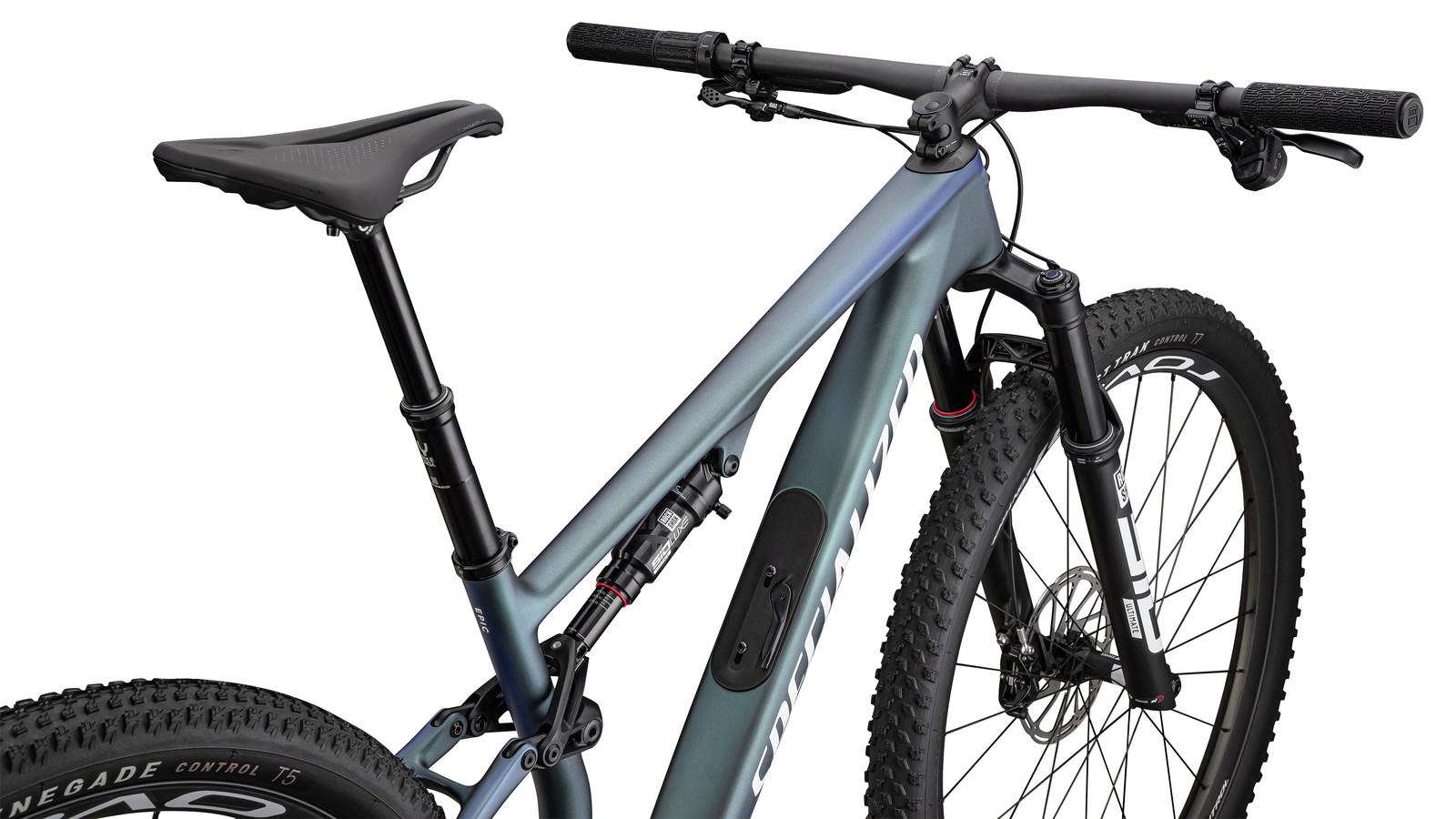
For those who yearn for a Brain-like feel, the Epic 8 uses a RockShox SIDLuxe shock with a 3-position TwistLoc remote adjustment, and the 'Magic Middle' position is tuned to perform similarly to the Brain of old. It uses a flat regressive damper that remains firm under low-speed compressions (pedaling forces), but once shaft speeds increase, it reaches a dump-off point, and compression opens fully. Very Brain-esque, I know. Specialized aimed for Magic Middle to be the position riders and racers use ~80% of the time since it performs well climbing and descending. The other two positions, Wide Open and Sprint-On-Lock are self-explanatory. Wide Open uses a linear air spring with a bottom-out bumper to further improve comfort during big compressions, and Sprint-On-Lock uses the firmest damper tune available for a nearly-movement-free platform. The Epic 8 EVO comes with FOX's Float shock with a 2-position lever that provides the Wide Open and Sprint-On-Lock damper settings.
The Electronic Brain - RockShox Launches XC Flight Attendant
Speaking of a brainless Epic, the S-Works model comes with RockShox's new XC Flight Attendant. You can read all about the tech and features HERE, but the gist of it is that it's an electronic suspension system that gathers rider and trail data, runs it through an algorithm, and then automatically chooses the best suspension setting for a given moment. It picks between three compression positions (Lock, Pedal, Open) and can operate in a split setting (shock Lock position, fork Pedal position). There are no buttons to press, levers to engage, or grips to twist—just constant suspension changes based on rider input and terrain to create the most efficient suspension platform.
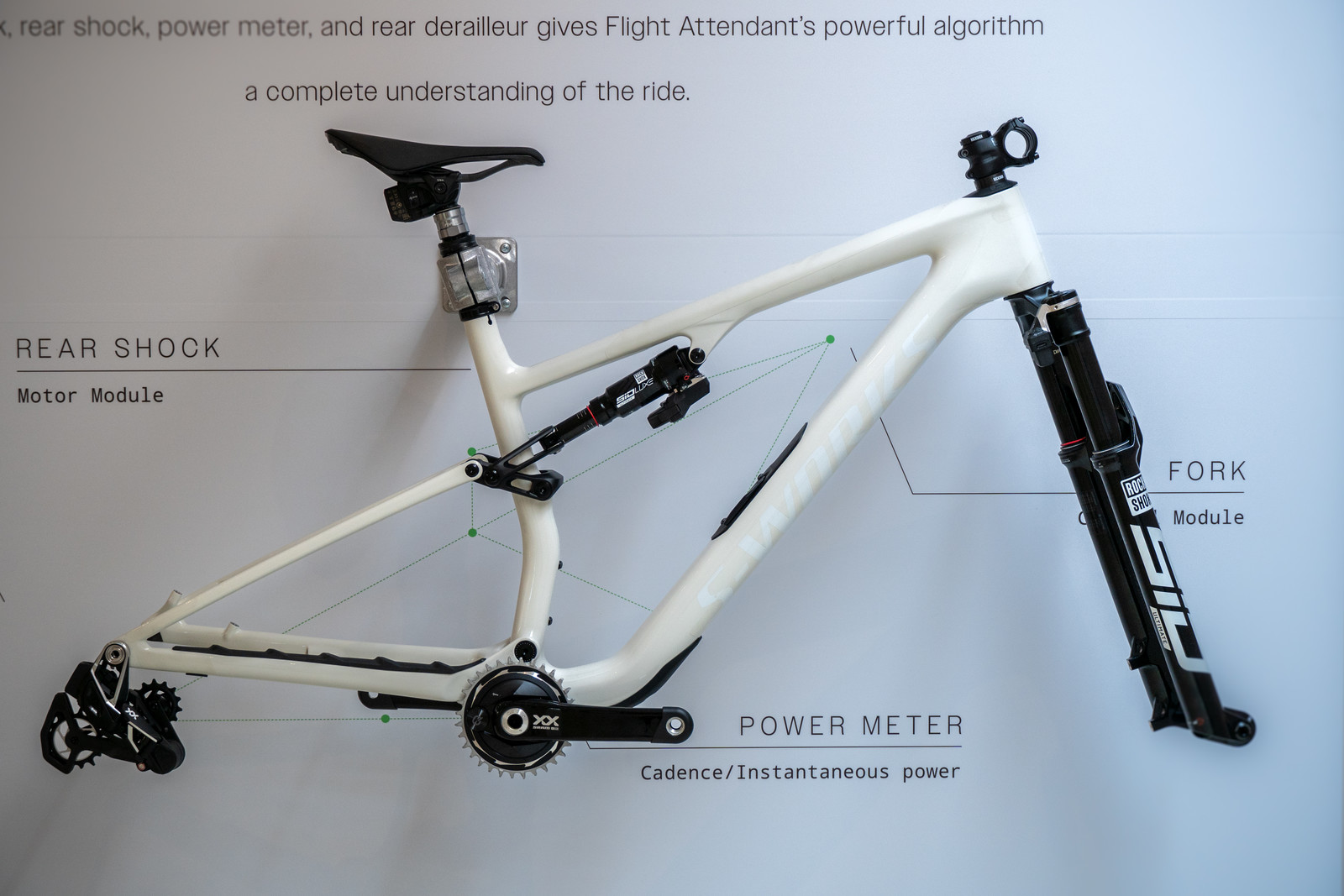
New with this generation of Flight Attendant is the Adaptive Ride Dynamics feature, which allows the algorithm to learn how you ride over an eight-ride period and then creates effort zones that influence suspension settings. There are four zones based on a rider's watts, so depending on how hard you're pushing, Flight Attendant will provide a suspension setting to match your output. This feature is only available with a power meter and offers the most functionality when sprinting or pushing really hard, as the suspension will trend towards a firmer setup to maximize efficiency.
Build Kits
Specialized is launching the Epic 8 with four builds—Comp, Expert, Pro, and S-works. All builds come with Rockshox suspension and SRAM drivetrains and brakes. The Epic 8 EVO is only available in two builds—Comp and Pro. Both builds come with FOX suspension and SRAM drivetrains and brakes. You can also get an Epic EVO frame only or an Epic frame, fork, and shock combo. Finally, new for 2024, an XS frame size has been added.
With component spec being the main differential between both Epic models, here is a breakdown of how parts compare:
| Epic | Epic EVO |
|
|
On the Trail
The intersection of my life spent obsessing over gravity mountain biking with the evolution of cross-country bikes came to a head last December during a four-day press camp in Chile. I rolled up expecting to leave with sore legs, a few near-death over the bars, and an affinity for the EVO. I did leave completely wasted after climbing over 10,000 feet, but my heart fell for the Epic as my mind began daydreaming of plans to become a pedal-craving adventure cyclist.
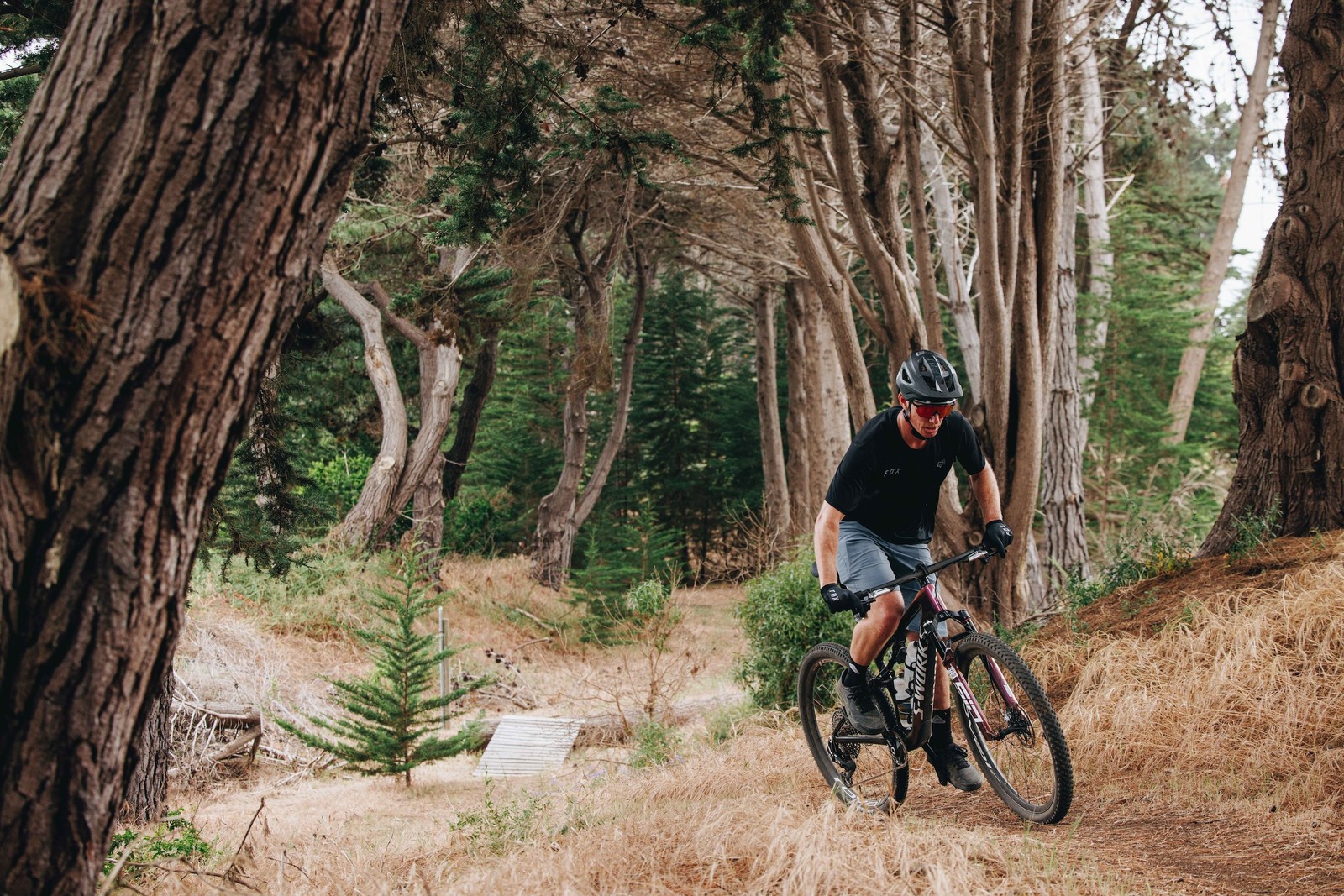
The setup on both Epics was simple, with no weird tweaks needed to ride at a quick pace. I didn't have to make any out-of-the-ordinary suspension adjustments, and I ran both cockpits as they came stock. Surprisingly and a bit confusingly, I got along better with the one-piece drop bars on the S-Works Epic 8 compared to the 20mm rise bars on the EVO 8. I think this came down to the drop bars complimenting the lightning-quick personality of the Epic on climbs. And despite being over 40mm lower than the bars I typically ride, I never felt sketchy descending. A product of my lanky arms and the bike's relaxed geometry, I was able to ride faster than I should have been going after just the first day on the bike. The EVO, in contrast, wanted to place me upright and ready to get jiggy when trails got wild, but I would have needed either more stack or a 30mm+ rise bar to fully push the bike to its limits.
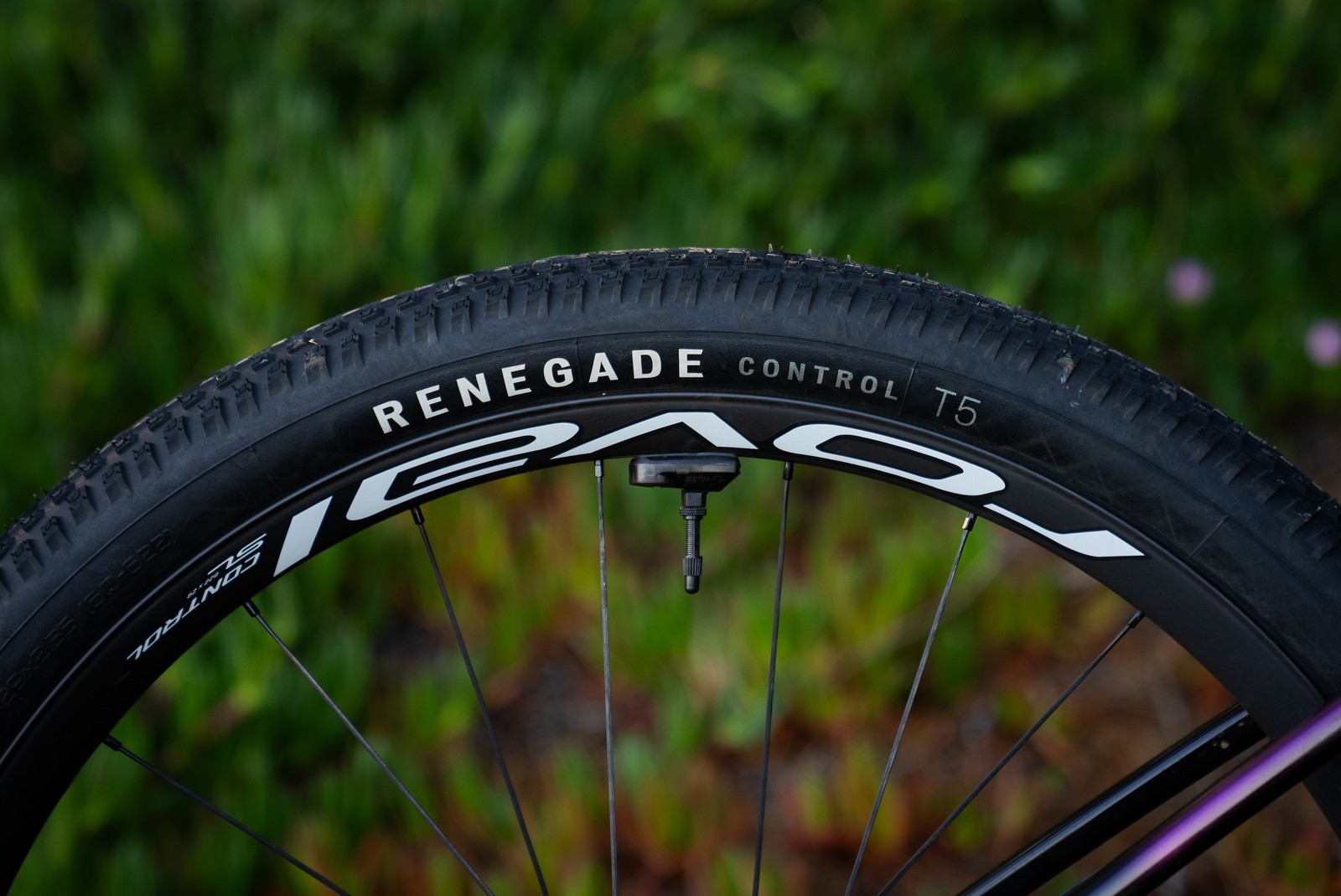

The wheels and tires were the sole differentiator that gave each Epic a distinguished ride quality. The Epic's low-profile Fast Trak/Renegade tire combo in a Control casing was mighty quick but had a narrow window of traction and limited sidewall support. Combined with the 24-spoked Control SL wheels that required a delicate approach when pumping through compressions or berms to avoid excessive flex, and the Epic I rode was limited by its wheel setup. I know it's a race-bred XC bike, and balancing rolling speed and weight with support is the name of the game with wheels and tires. But after riding the EVO with its stiffer Traverse SL wheels and Purgtory/Ground Control tire combo in a Grid Trail casing, it was clear that I required a tire with more tread and a wheel with more spokes to withstand how hard I could push the bikes.

Unfortunately, I only had the chance to ride the S-Works Epic with Flight Attendant. It's always a treat getting to ride a halo product that I could never afford in the real world, but it was a bummer not to ride the TwistLoc setup and experience the Magic Middle position that most Epic owners will end up on. The middle Pedal position of Flight Attendant is supposed to feel the same as Magic Middle, and I would describe it as feeling like a moderately firm lockout. The suspension doesn't move much under rider input, but it has enough give to absorb medium compressions from roots, rocks, or smaller ledges. This makes for a relatively comfortable pedaling experience that is plenty efficient for everyday riding with enough movement to take on smoother liaisons between climbs. If I were chasing KOMs or somehow got tricked into an XC race, I would still pick the fully locked-out position to maximize efficiency.
An Epic Bike For The People
Hello. My name is Jason, and I'm a recovering gravity rider who didn't know cross-country bikes had become such versatile little shred vessels. Titling this article the 'XC Bike That Could' was done for more than just clickbait—the Epic 8 rode with an authority and composure that inspired aspirational riding.
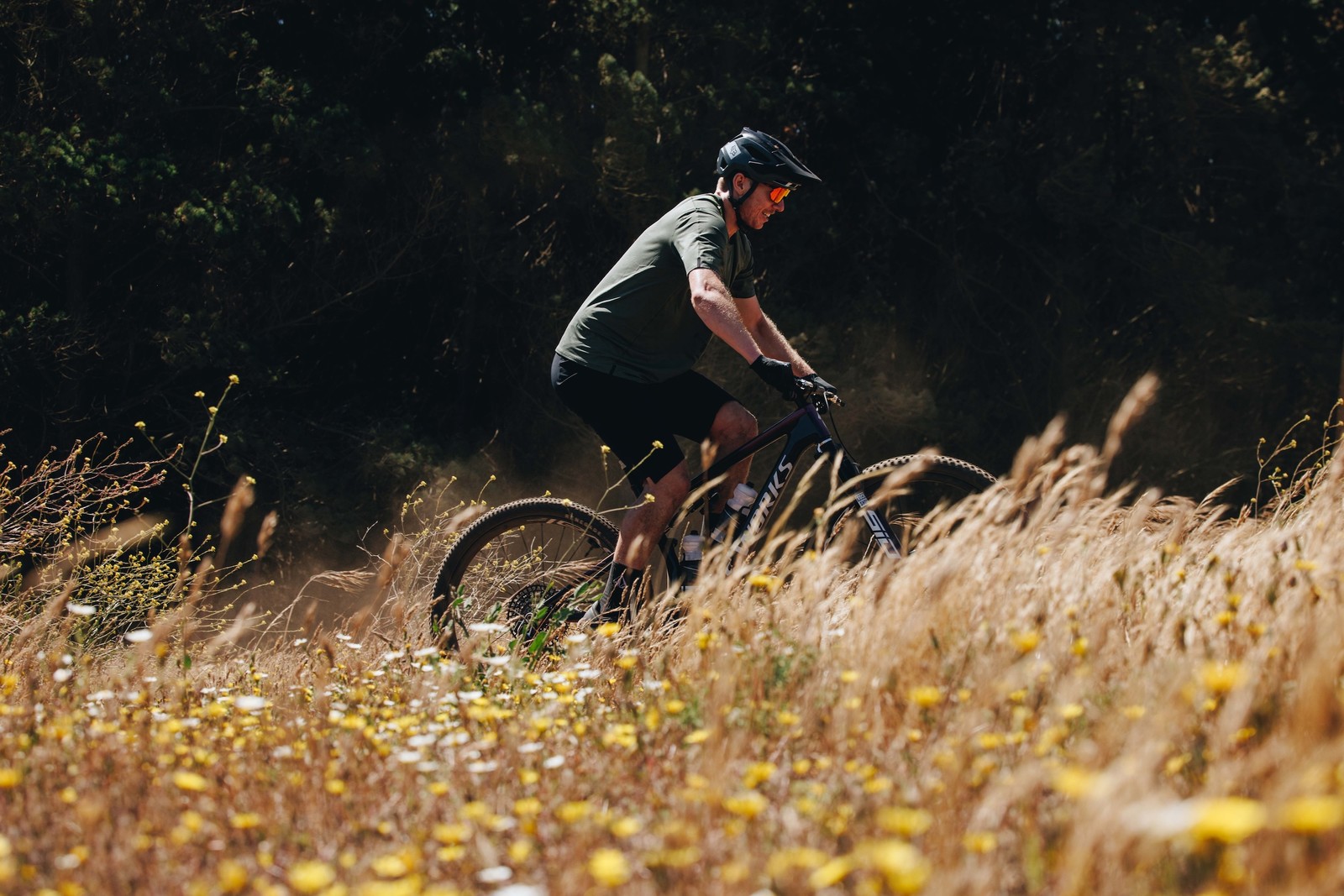
I expected the Epic to provide a premium pedaling experience, which it did. But what really stood out was how it morphed to compliment my efforts. If I wanted to test my VO2 max and unleash some watts, the bike carried speed like a rocket ship. The rear suspension was firm but active enough to keep me from bouncing out of the saddle, making it easy to hold a steady cadence. I don't have many other XC bikes to compare the Epic against (the closest comparisons would be the Ibis Exie, Scott Spark, SCOR 2030), but there's no denying it's intended to go out and win races based on its eagerness to hold momentum up climbs. When pedaling at a moderate pace, the not-too-forward seated position and spacious reach made it easy to spin circles without blowing myself up. There is no right or wrong way to pedal the Epic 8, making it perfect for Elite racers to weekend warriors, and anyone who lands somewhere in between.
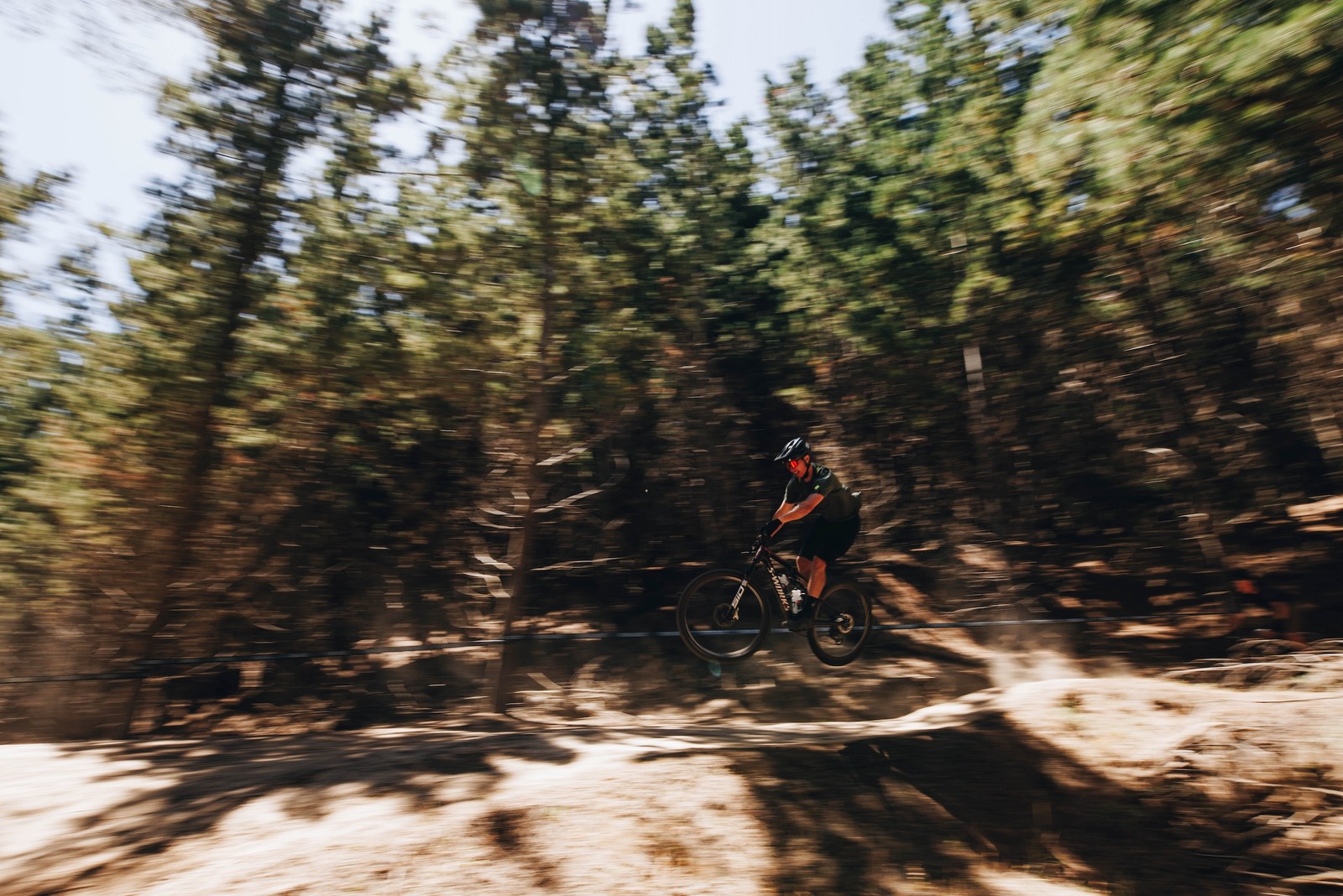
Descending is really when the Epic's shock-and-awe began to escalate as it pulled more cards out of its sleeve. I usually get away with riding short travel bikes a bit past their intended use. I'll still throttle my aggression to avoid getting in over my head and accept a slower average speed in the name of safety. As I spun up the first climb on the Epic and experienced its lightweight and superb pedaling abilities, I questioned how it would respond when I turned around to head back down. But my mindset drastically changed after just a few corners and high-speed straightaways. The Epic's ability to settle into its travel and remain calm through compressions gave me the green light to attack trails with more tenacity than I thought was possible on a cross-country bike—especially one that climbs so well. Day one on the Epic was spent repeating a single test loop with one sustained descent. After roughly a thousand laps down the trail, my lines and braking points were dialed, and I should have been wearing a full-face with how fast (and borderline out of control) I was going. For anyone who finds themselves in the small beach town of Matanzas, Chile, good luck taking my KOM down La Diablada. But in all seriousness, I live for descents and prioritize having a bike that heightens that experience. The Epic provided confidence and composure in spades. It was enjoyable to haul ass on, matched with snappy, instant handling that was a blast on tight trails.
Epic, But Make It EVO
The EVO may share the same frame as the Epic, but it has its own personality. Due to the longer fork, higher front end, meatier tires, and extra weight, the EVO pedaled with less urgency. It was still decently quick and efficient, but relative to the Epic, the EVO didn't feel like it maximized every bit of pedaling power. Instead, it got me to the top of climbs in a relaxed manner. Flipping the lockout switch on the shock wasn't necessary, but it was nice for squeaking out some extra efficiency on smooth climbs. However, it was so firm that it beat me up if I used it for too long on trials with even mild chatter bumps.
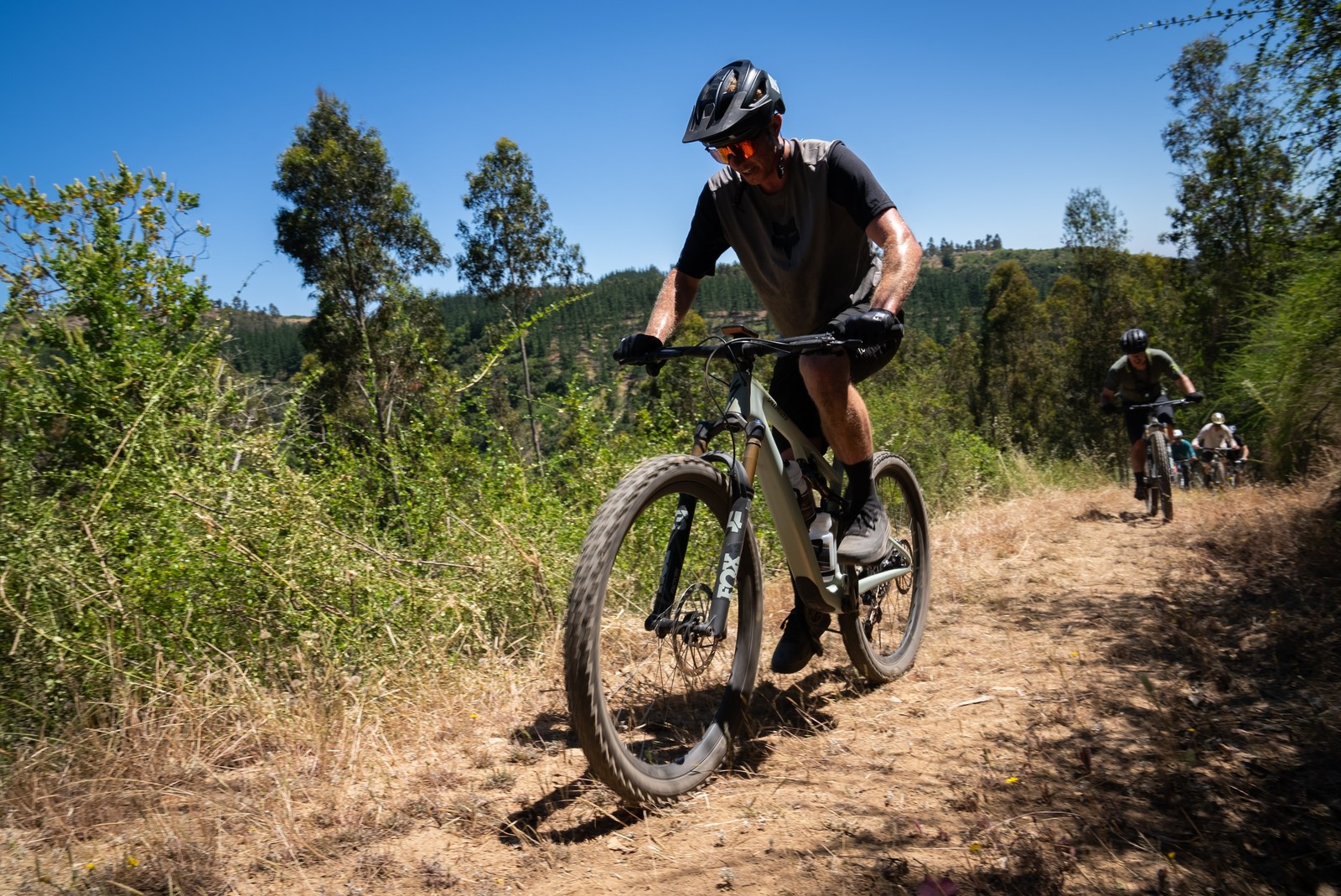
I anticipated the EVO would outshine the Epic on descents, but when push came to shove, it delivered marginal gains. It did provide more stability over repetitive compressions and better support through turns or g-outs. But with it existing solely to be a more capable Epic, it didn't offer enough benefits to be my favorite of the two iterations. And I don't think I was the only one to feel this way. The press camp was organized so that we spent a day on Epic, a day on EVO, and the third day was our choice. I picked the Epic, and so did 95% of the other editors.
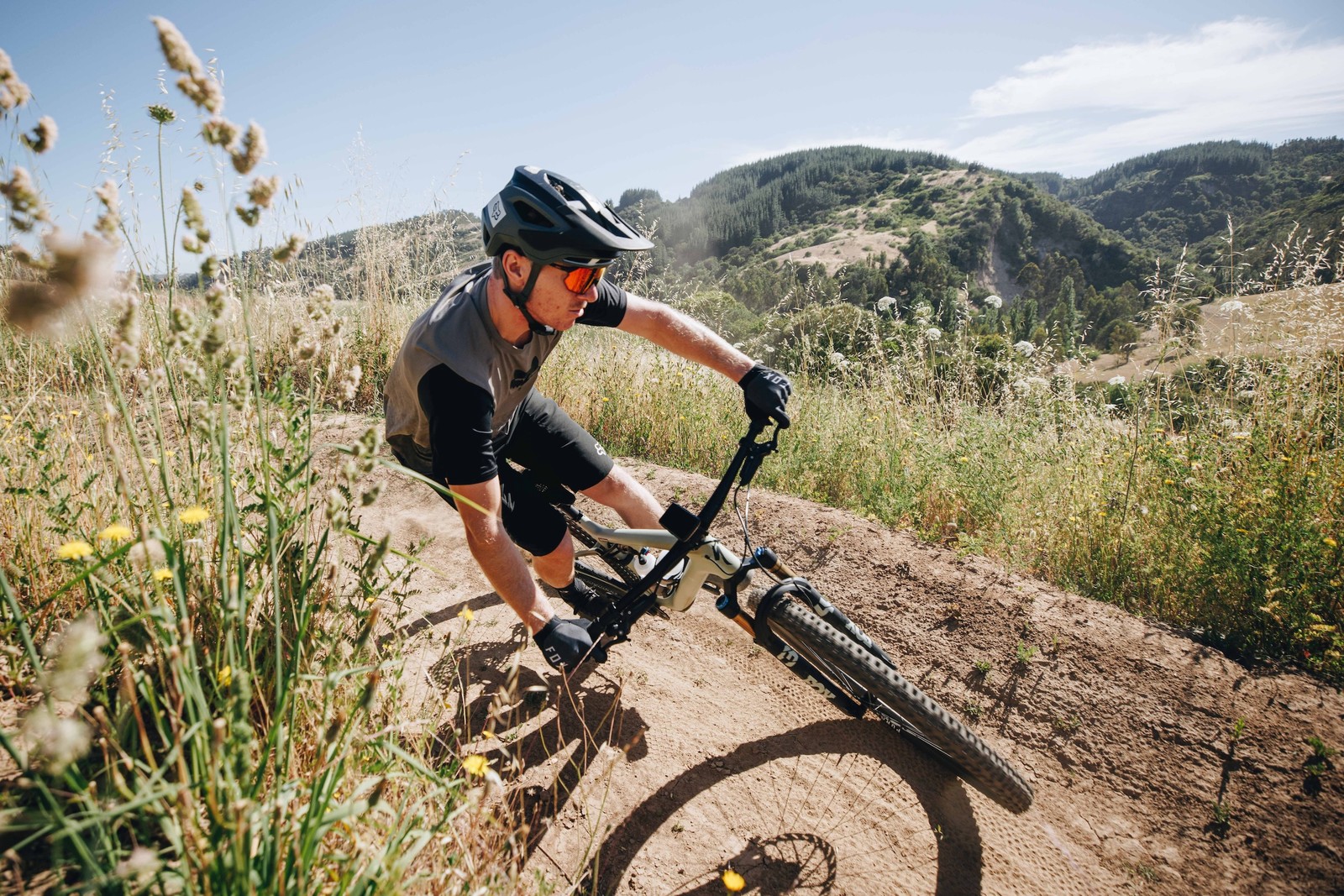
The EVO best serves riders who want one bike to take on big rides with aggressive terrain. I'm talking about trails you'd prefer to ride on an enduro bike, but the only way to access them is by some god-awful, multi-hour ascent. It pedals damn well, it's more comfortable for the long haul, and offers extra peace of mind when trails get rowdy.
I'd really like to create a build that lands between the stock options, such as an Epic with taller bars, wider rims, and trail casing tires. That way, I'd end up with suspension lockouts but components that can support more demanding riding.
RockShox Flight Attendant Performance
I'm a fan of what RockShox has created with Flight Attendant. I understand the discontent with adding more batteries, the cost of the components, and the limited frame compatibility. But if you remove the hoops you have to jump through to ride the system, it delivers a clear advantage over existing suspension lockouts. It's also incredibly intuitive to set up, use, and adjust, making it a highly technical yet user-friendly component.
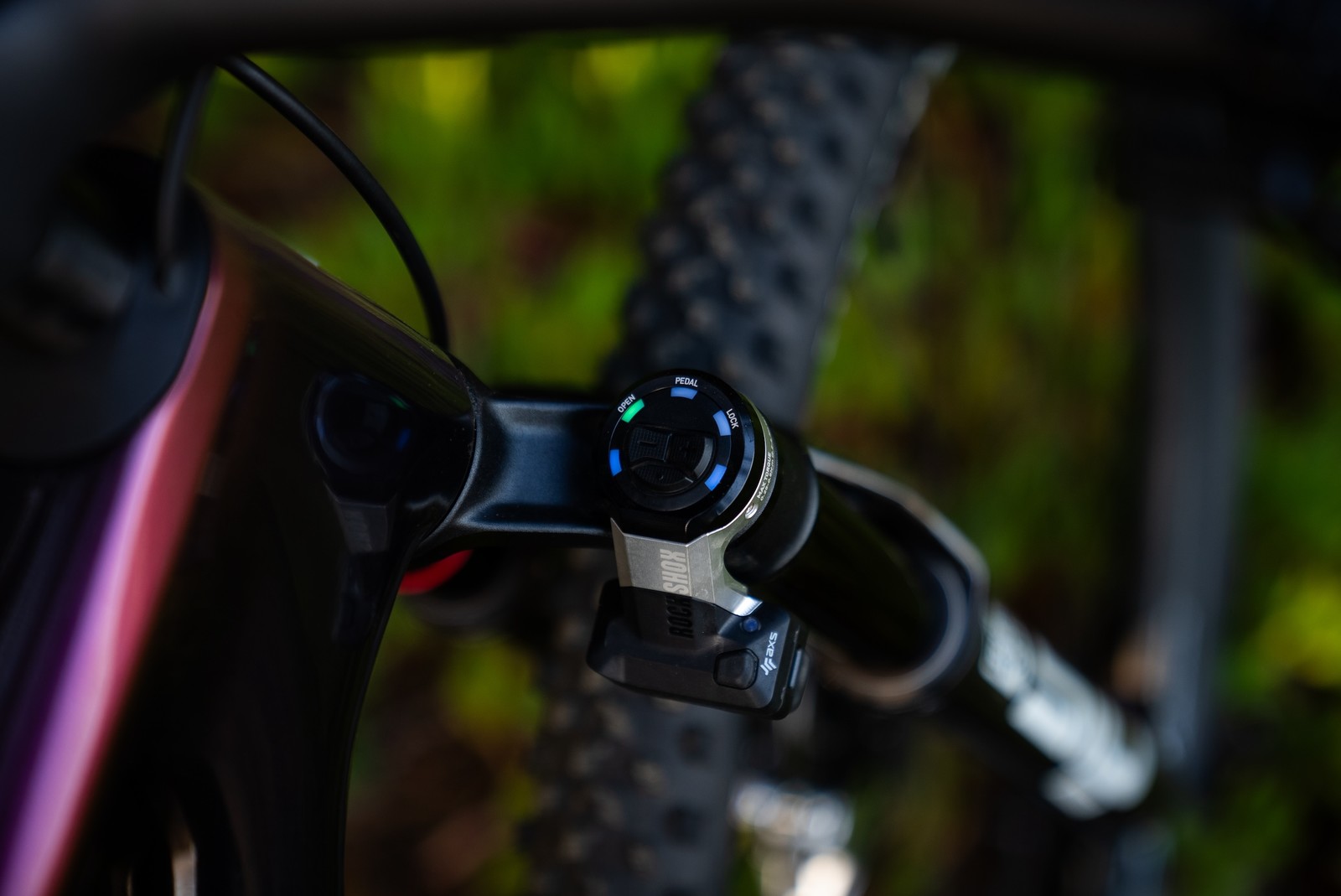
If you've ridden Flight Attendant before, the XC version functions exactly the same. If you haven't, the best way to describe it is to imagine having a three-position cable actuated lockout for your fork and shock and then constantly changing them independently to achieve the most efficient suspension platform. But with Flight Attendant, you don't have to do anything, and the second you encounter a bump or downhill, your suspension instantly opens. It's quite dreamy. I first rode Flight Attendant on a Trek Slash, and it was cool to see how lockouts can make a long-travel bike much more enjoyable to climb. On the Epic, it felt like a more natural and logical application of the technology. Even though the suspension design already created a really efficient pedaling platform, Flight Attendant ensured that every moment on climbs was maximized.
Unfortunately, logging only three rides didn't allow me to see how the new Adaptive Ride Dynamics feature changes Flight Attendants' tendencies. I did, however, play around with the Bias adjustment, which instructs the suspension to favor a more open or locked position. The stock 0 position will likely be the most popular amongst riders as it applies to the widest range of terrain. It trends toward the locked position at obvious moments without creating a setup that's too firm. -2, or the bias setting that trends most towards the open position, felt the least useful for XC riding. Unless you ride really rocky trails and need extra traction, most riders will find it too soft and inefficient. +2 is the firmest setting and best saved for smooth trails, as the suspension remains in the Locked or Pedal position even over small bumps, which can hinder your cadence or average power. I preferred the +1 biased setting because the suspension remained locked more often than not, but it wasn't as rough as +2. RockShox's chart does a good job illustrating the difference between each bias setting.

Overall, if you have the means to buy the S-Works Epic or the XC Flight Attendant package separately, your riding experience will be elevated, both from a holistic and performance standpoint. You'll drop the extra cables from a traditional bar-mounted lockout, add the ability to ride in split-position compression settings, and don't have to do anything but go out and ride your bike.
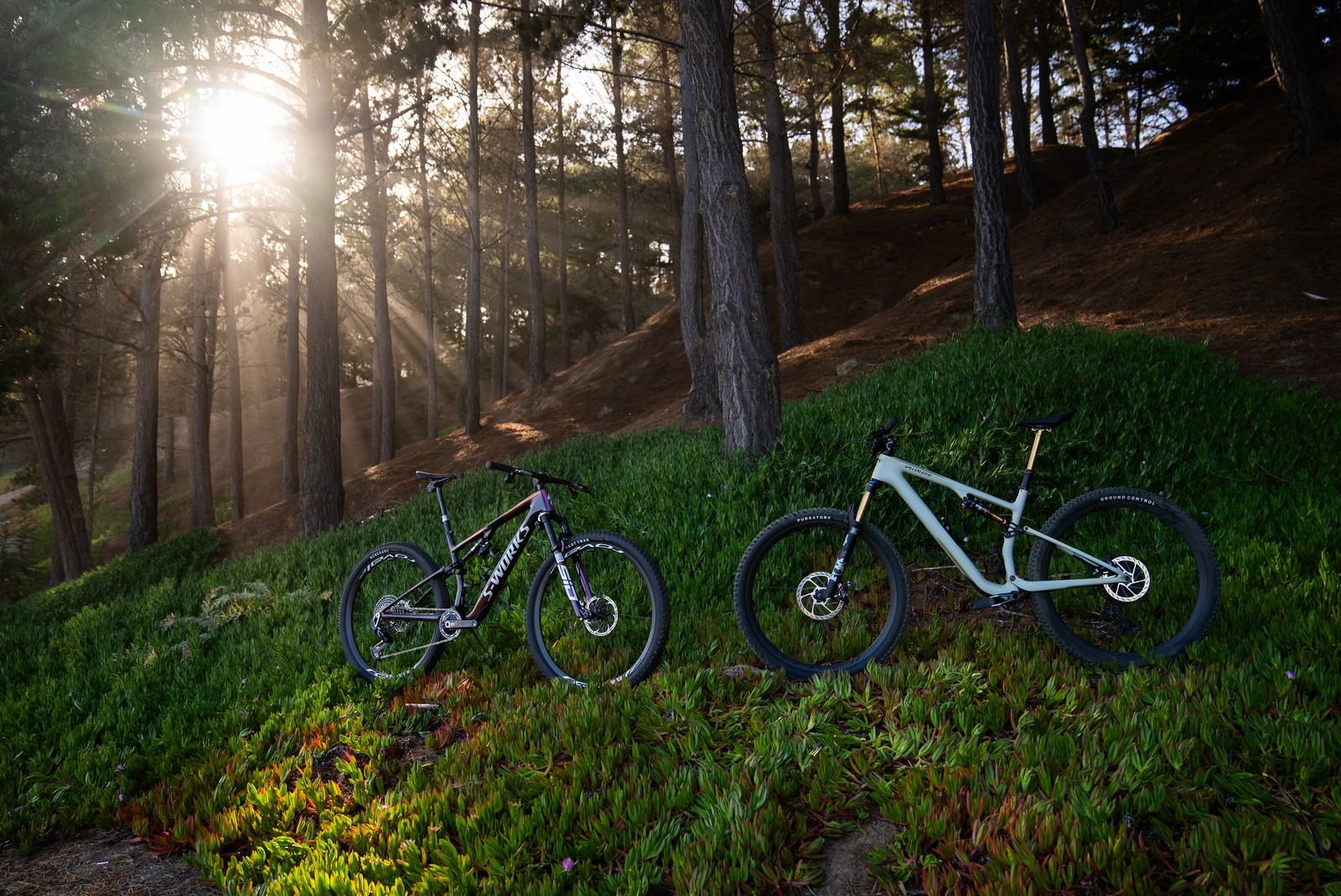
What's The Bottom Line?
The Epic 8 is a bike that makes you want to ride more. It climbs with the urgency you'd expect from a World Cup XC race bike but rips descents with the pose and control of a bike with more travel. It's a best-of-both-worlds scenario for riders wanting a platform that will complement their pedal-smashing lifestyle without being a bummer when trails get gnarly. For those less focused on having the lightest, most efficient XC bike, the Epic 8 EVO offers the confidence needed to push even harder going downhill. Regardless of what you're seeking, now that both Epics use the same frame, it opens the door for riders to construct intentional builds that cater to their exact needs.
As for me, the ex-downhill racer who showed up at a press camp for an XC bike with flat pedals, the Epic made me question how much travel I need to have a good time. It's shocking how hard you can ride a modern XC bike without giving up any time on climbs, and the Epic 8 is one of the bikes spearheading this changing of the guard.
For more information, please visit specialized.com
View key specs, compare bikes, and rate the new Specialized Epic 8 and Epic 8 EVO in the Vital MTB Product Guide.
About The Tester
Jason Schroeder - Age: 29 // Years Riding MTB: 18 // Height: 6' (1.8m) // Weight: 175-pounds (79.3kg)
A once-upon-a-time World Cup downhill racer turned desk jockey, Jason has spent years within the bicycle industry from both sides of the tape. A fan of all-day adventures in the saddle or flowing around a bowl at the skatepark, he doesn't discriminate from any form of two-wheeled riding. A SoCal native who doesn't spend too much time in any single place, you can find Jason camped out in his van most weekends somewhere on the West Coast.
Specifications
Upper bearing: 49.5 OD x 40.5 ID x 6.5mm, 45° x 45°
Length: 170mm (S-M), 175mm (L-XL)
Rear: Specialized Ground Control, GRID casing, T7 compound, 29" x 2.35"
Width: 155mm (S), 143mm (M-XL)
Travel length: 125mm (S), 150mm (M), 175mm (L-XL)
• 12% more bump absorption and 20% less pedal bob
• SWAT 4.0 downtube storage
• 2-position adjustable geometry via flip chip in shock yoke which steepens the head tube angle by 0.5° and raises bottom bracket by 6mm
• Internal cable routing
• Compatible with SRAM UDH (Universal Derailleur Hanger)
• Recommended shock sag: 12-13mm (25-30%)
| Where To Buy | |||
|---|---|---|---|
Free shipping on orders over $50 (continental U.S. only).
International shipping available. Some exclusions apply. |
Free shipping on orders over $50 (continental U.S. only).
International shipping available. Some exclusions apply. $3,800.00
|
||
Specialized Epic 8 Evo Pro Frame
$3,800.00
|
|||
Free shipping on orders over $50 (continental U.S. only).
International shipping available. Some exclusions apply. |
Free shipping on orders over $50 (continental U.S. only).
International shipping available. Some exclusions apply. $3,800.00
|
||
Free U.S. shipping on orders over $50, except bikes.
There is a $50 destination fee for bikes. |
|||


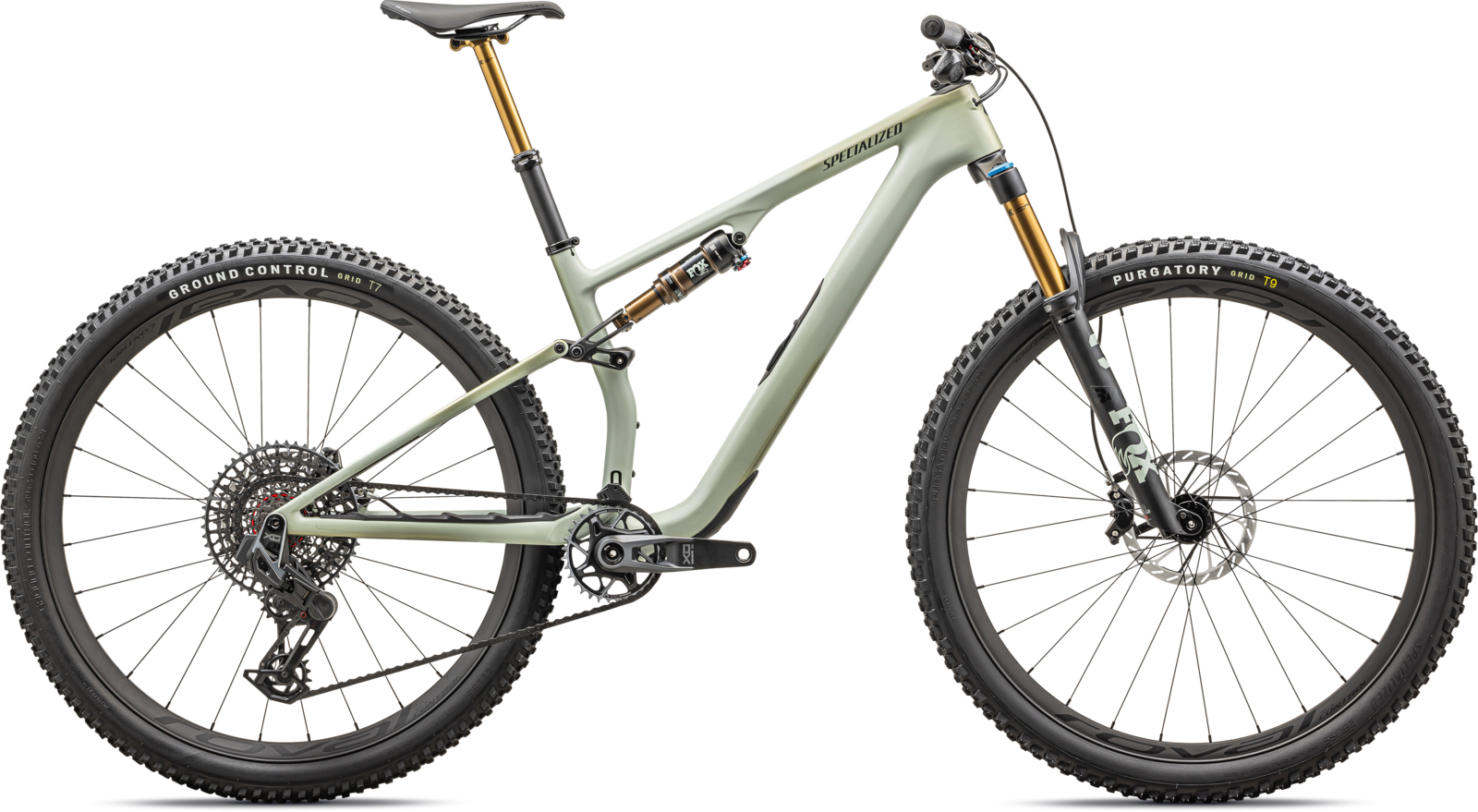






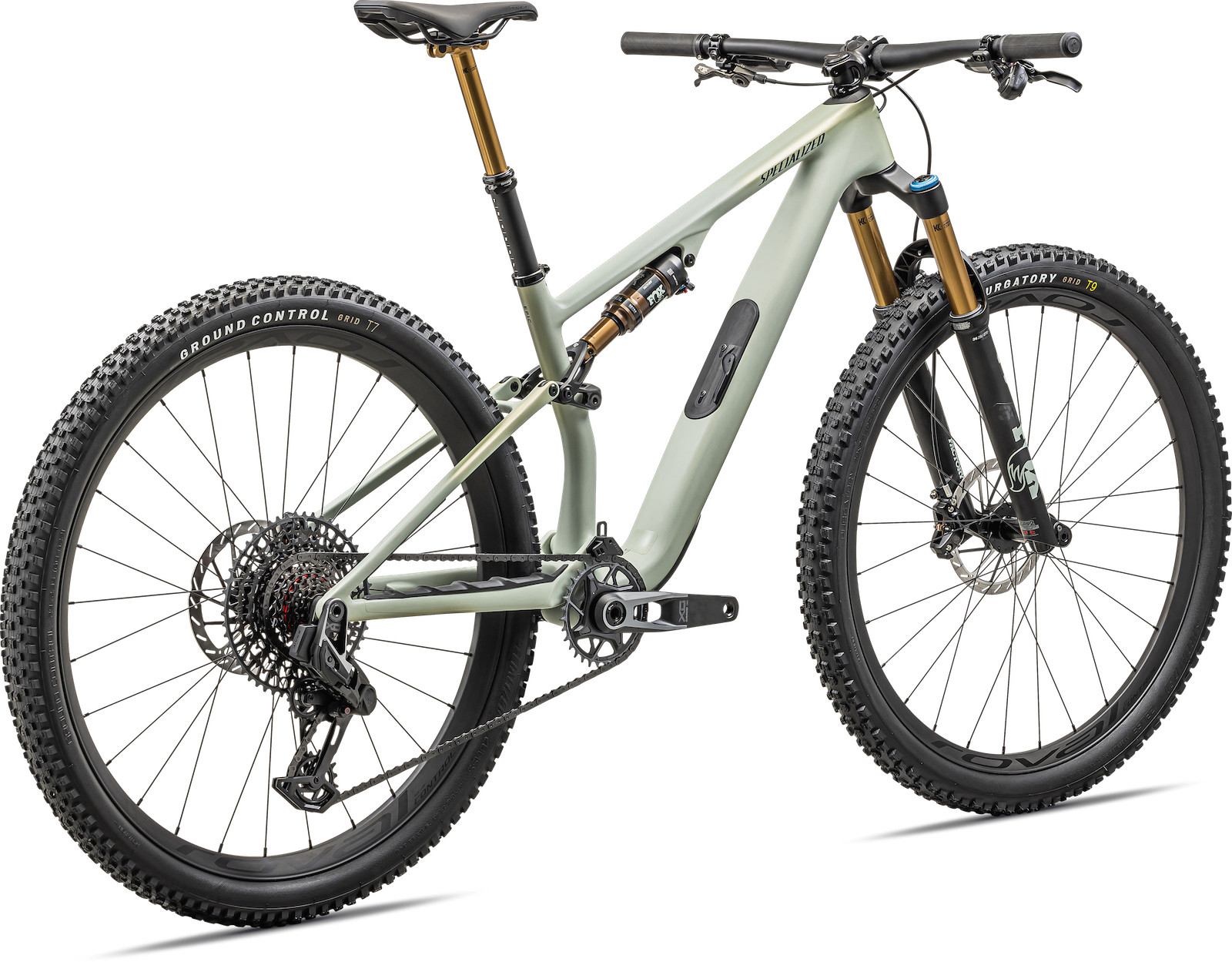

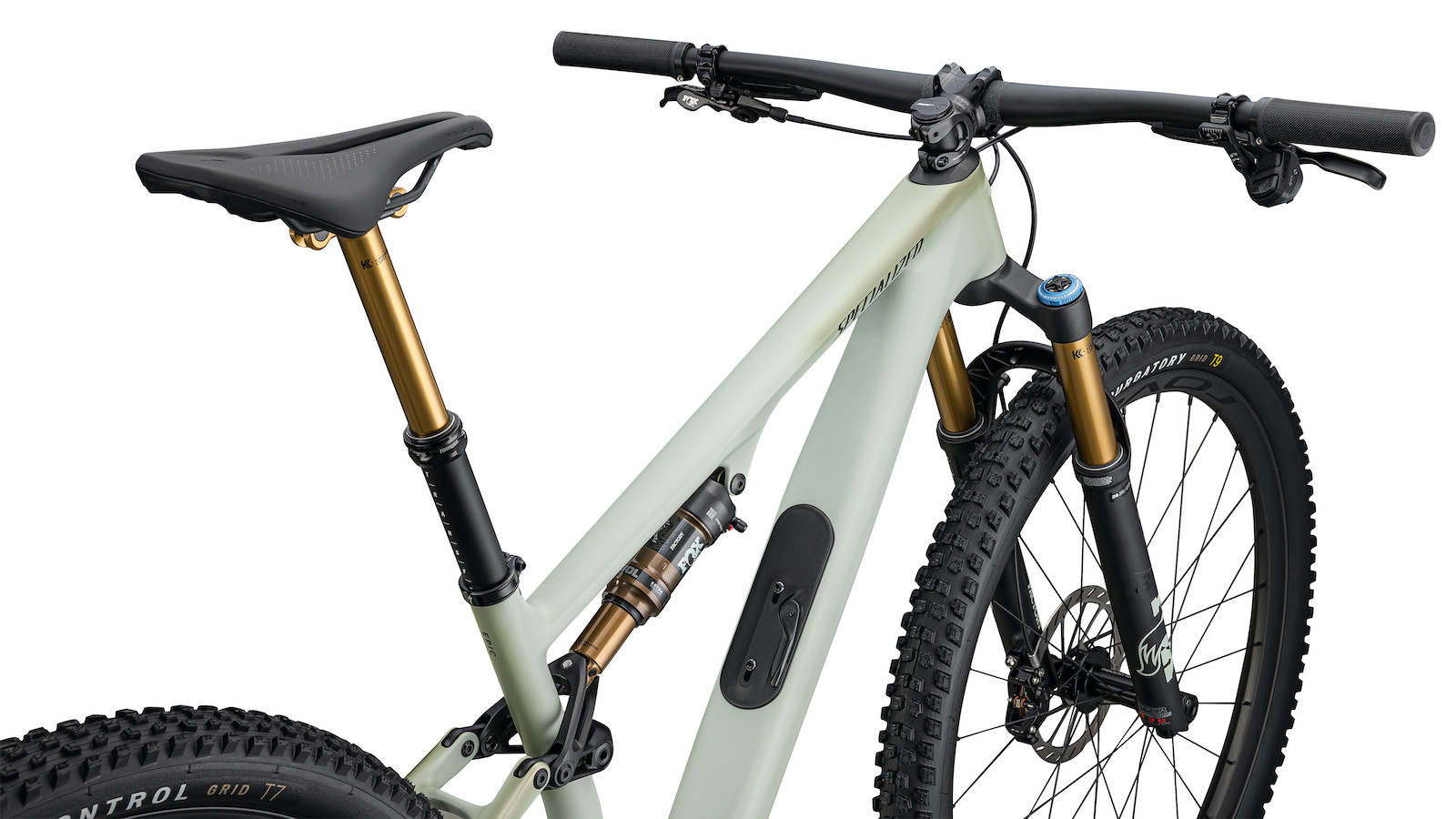
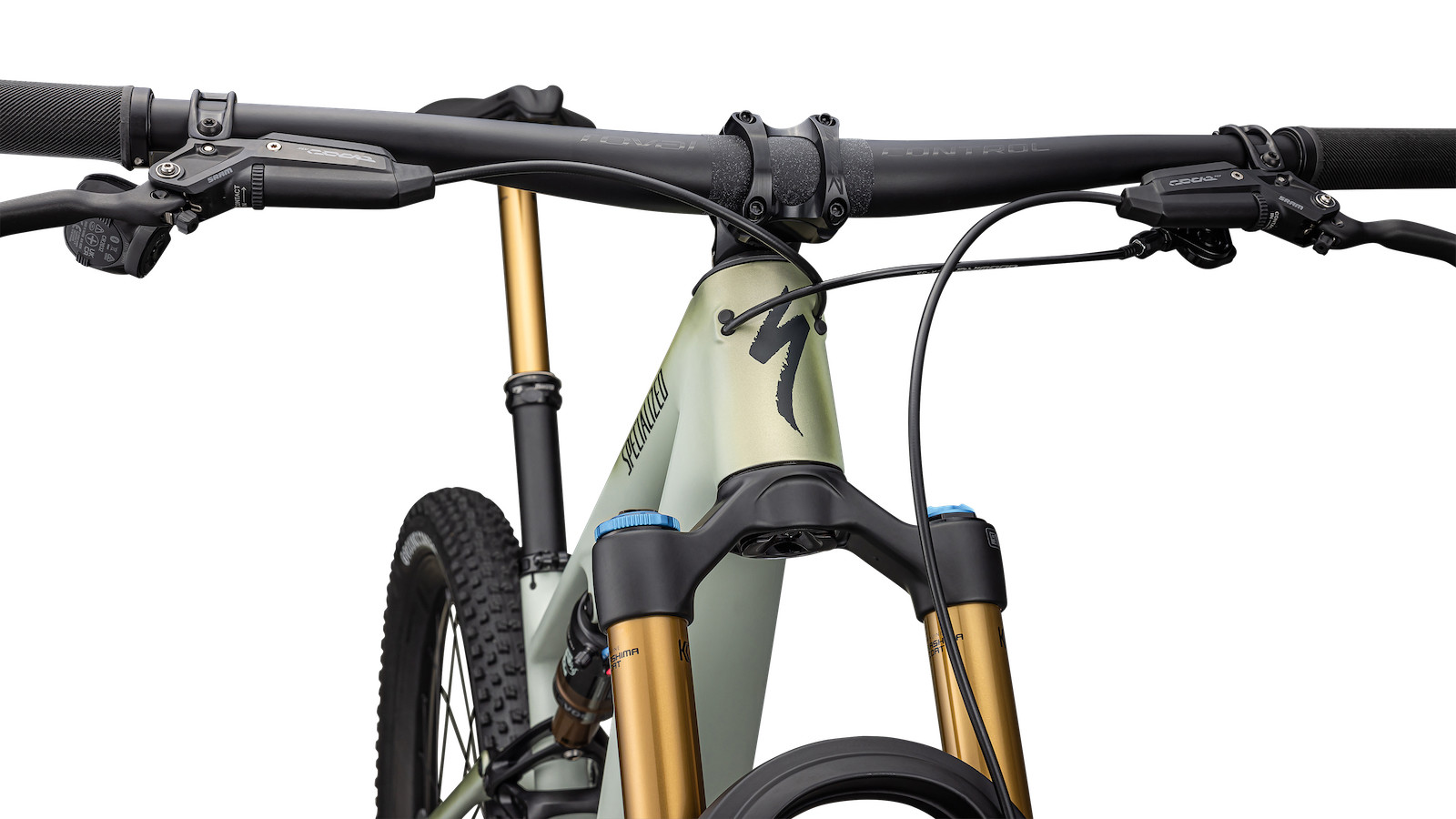




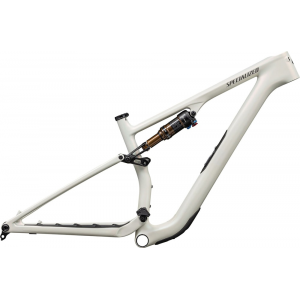

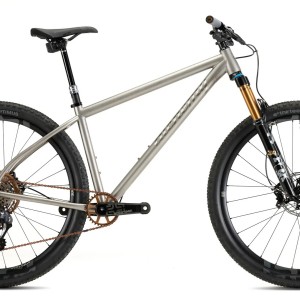

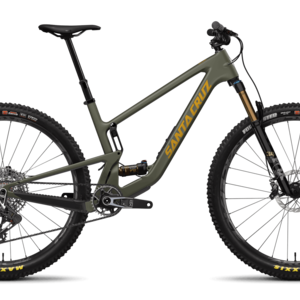
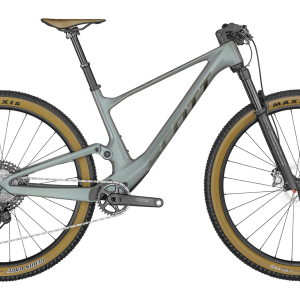

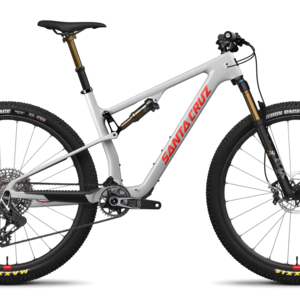
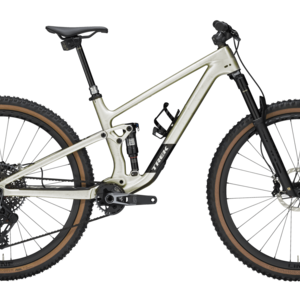
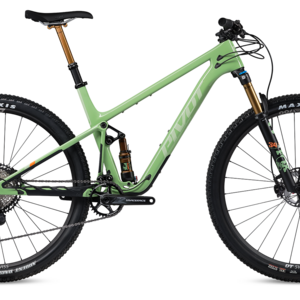






3 comments
Post a reply to: FIRST RIDE - Specialized Epic 8 and Epic 8 EVO | The XC Bike Tha